Слайды и текст этой презентации

6 июля 1916, Париж) — французский живописец и один из
основателей «Общества независимых художников».
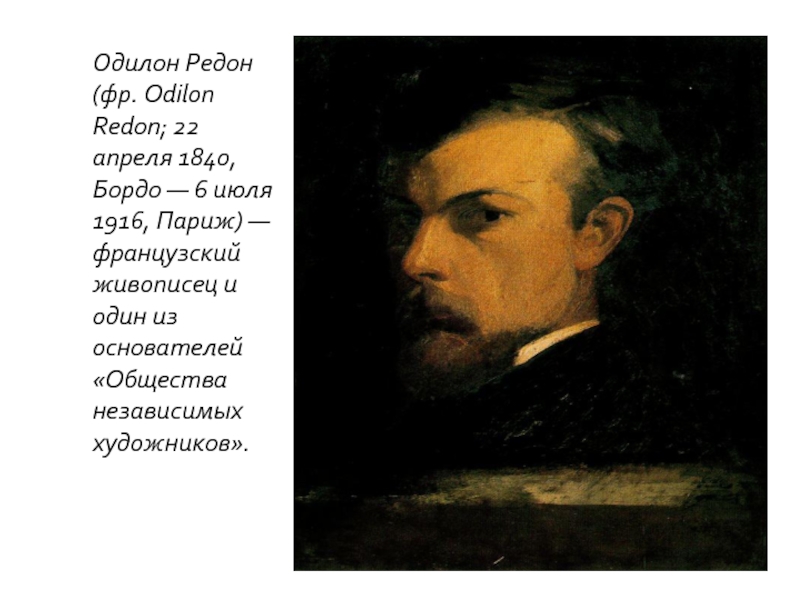
Слайд 3«Чёрный» период
В «чёрный» период Редон, увлечённый человеческим подсознательным с его
страхами и кошмарами, создавал навязчивые и местами жутковатые рисунки углём
и печатную графику.
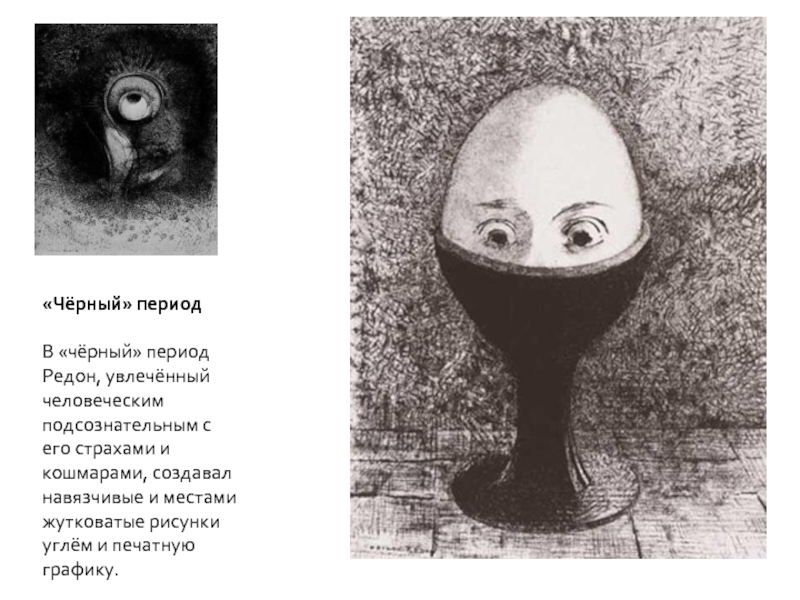
Слайд 5Особую известность получил его рисунок чёрного ворона — посланника смерти,
а также изображение огромного волосатого паука с человеческим лицом. Другой
важной темой были огромные глаза, рассматривающие зрителя. Например, рисунок, изображающий один глаз, который является одновременно гондолой воздушного шара, или яйцо с лицом на подставке, символизирующее кошмар клаустрофоба.
Слайд 8«Цветной» период
Во втором периоде творчества Редон порвал с чёрными тонами
и стал писать наполненные цветом картины с элементами идеализации антики
и природы. Широко известны его квадрига, парящая в цветных облаках, и абстрактные изображения медуз, моллюсков и других морских обитателей. Эти многослойные картины идеального мира оживают благодаря глубоким переливам красочного тумана.
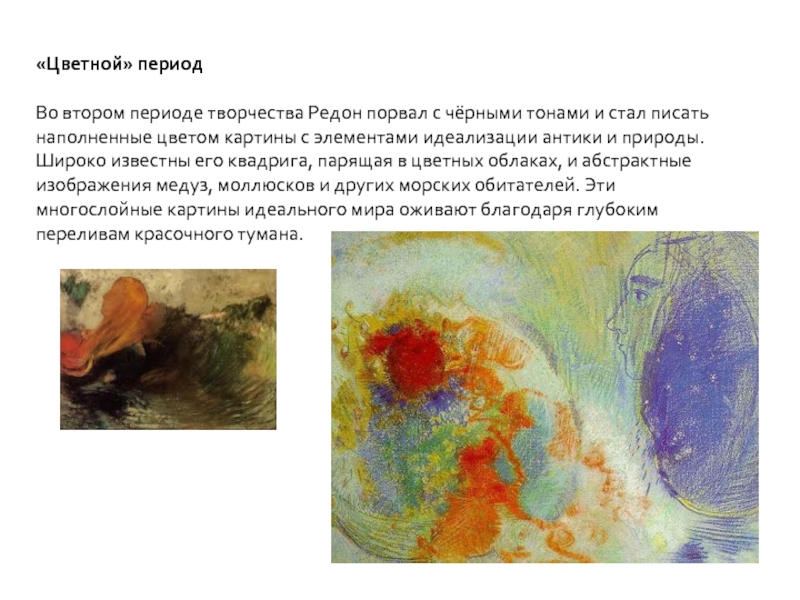
Слайд 14Несмотря на то, что творчество Редона совпало по времени с
расцветом импрессионизма, оно абсолютно самобытно и отлично от него. Его
картины по форме и содержанию близки к экспрессионизму и сюрреализму, хотя этих художественных направлений в то время ещё не существовало. Поэтому многие художники считают Редона предвестником ирреализма в живописи и искусства, обращённого к психике человека.
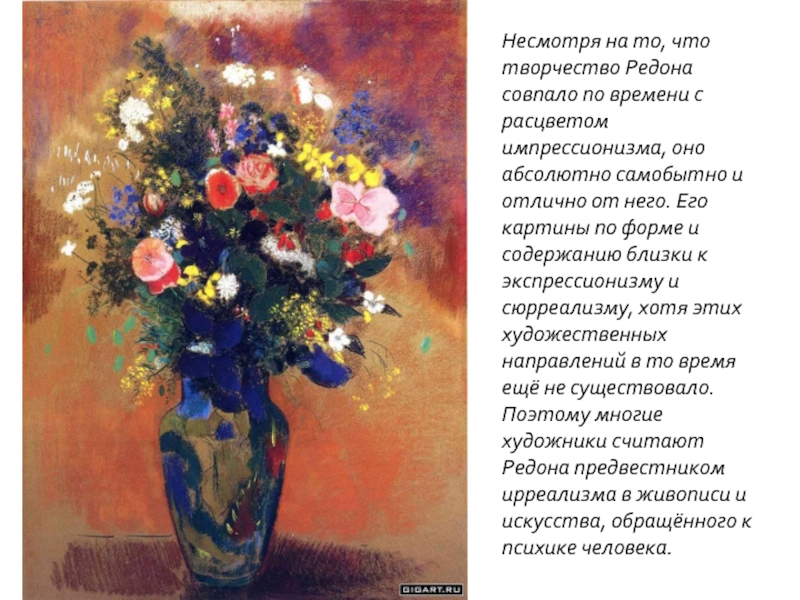
Слайд 17Во втором периоде творчества Редон порвал с чёрными тонами и
стал писать наполненные цветом картины с элементами идеализации антики и
природы. Широко известны его квадрига, парящая в цветных облаках, и абстрактные изображения медуз, моллюсков и других морских обитателей. Эти многослойные картины идеального мира оживают благодаря глубоким переливам красочного тумана.Причины обращения художника к полихромной живописи искусствоведы объясняют по-разному. Одни говорят о том, что, взявшись за краски, мастер будто бы «примирился с реализмом». Однако «цветные» картины Редона не менее фантастичны, чем его черно-белые работы. Другие полагают, что художник «устремился к ярким цветам как к потерянному раю». Перемену в стиле сам художник объясняет так: «Я понял, что, постепенно разматываясь, лента жизни дарит нам не только печаль, но и радость. Если творчество художника — это песнь о его жизни, то, помимо печальных черно-белых нот, в ней должны звучать хотя бы отдельные красочные ноты радости».
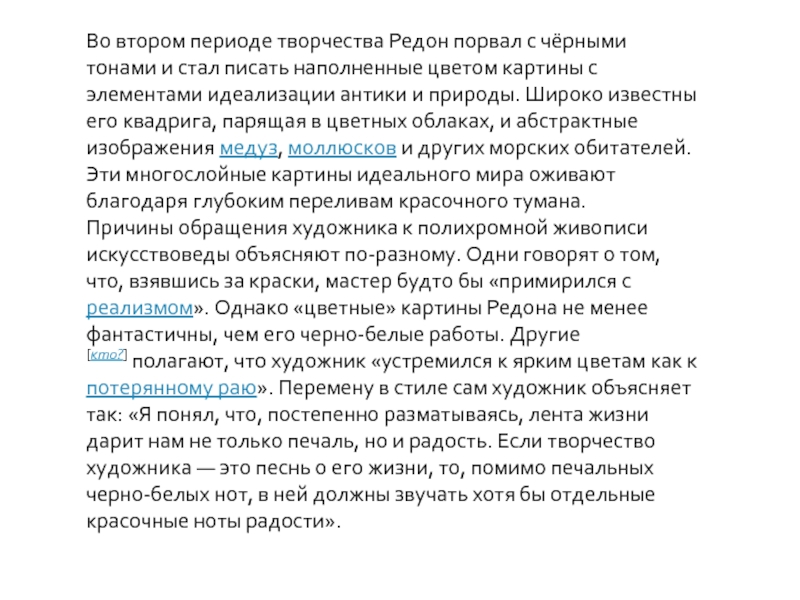
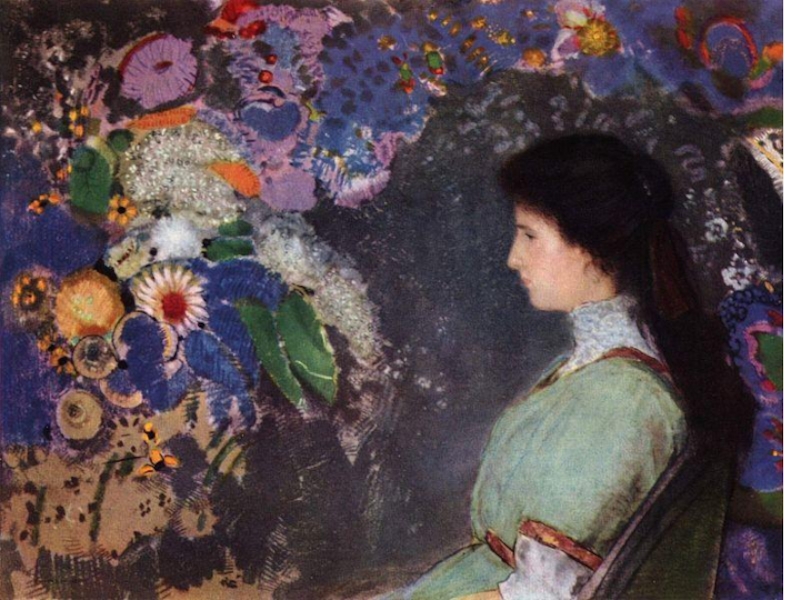
From Disgust to Empathy: The Crying Spider
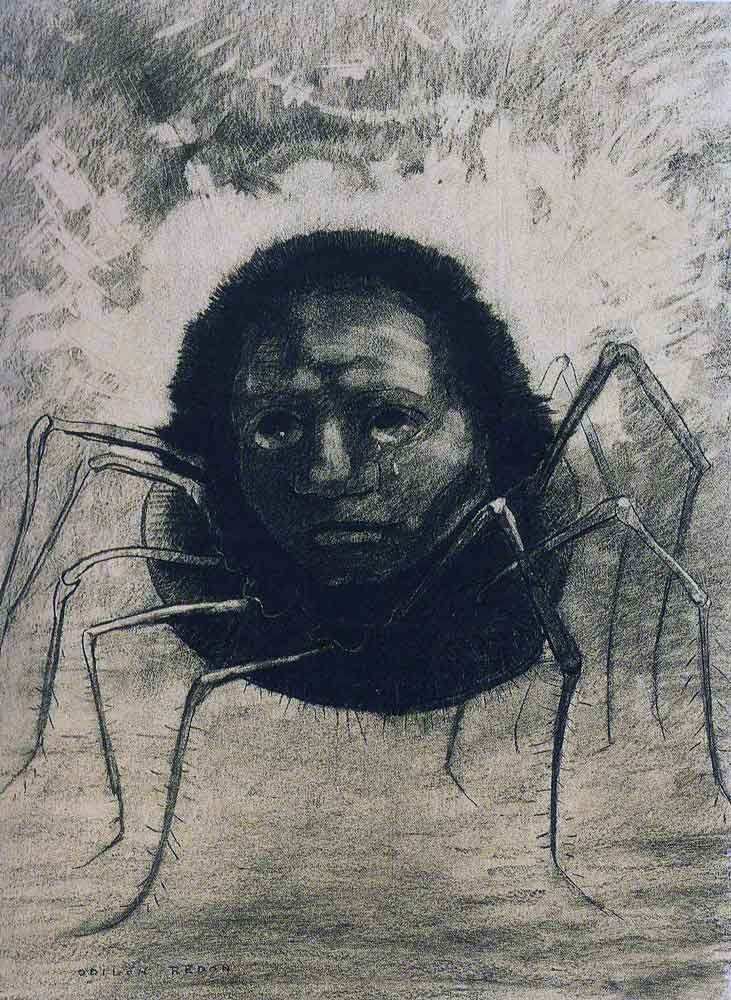
Spiders are a common motif in Odilon Redon’s work. Perhaps, they can be understood as a variation of the floating head symbol. Although spiders rarely evoke positive associations, Redon’s version of the unpleasant being is not as disgusting as it may appear at first glance. The Crying Spider is profoundly sad, weeping with so much sorrow that it is hard to be repulsed by it. Instead, the being evokes compassion, as if it is showing the face of sadness and pain hidden deep inside every human soul. Redon’s monsters were not meant to be terrifying. They can be interpreted as projections of human subconsciousness, suppressed feelings, or hidden emotional urges.
Apparition
- Date created: 1910
- Dimensions: 50 x 65 centimeters (19.6 x 25.5 inches)
- Location: Princeton University Art Museum, Princeton, United States
Apparition is the title of yet another painting by Redon that features an abundance of colors. Flowers and butterflies emerge on the left and two hazy figures appear in the bottom right corner of this work. This is a far cry from the anxiety-ridden “noirs” or “black drawings” that he produced over a decade earlier.
Odilon Redon was a Symbolist artist and like many of his paintings, this work aims to reflect the deeper meaning behind things. The figure on the left appears to be motionless while the one on the right is drawing toward the beautiful colors and starts to emit an aureole of light.
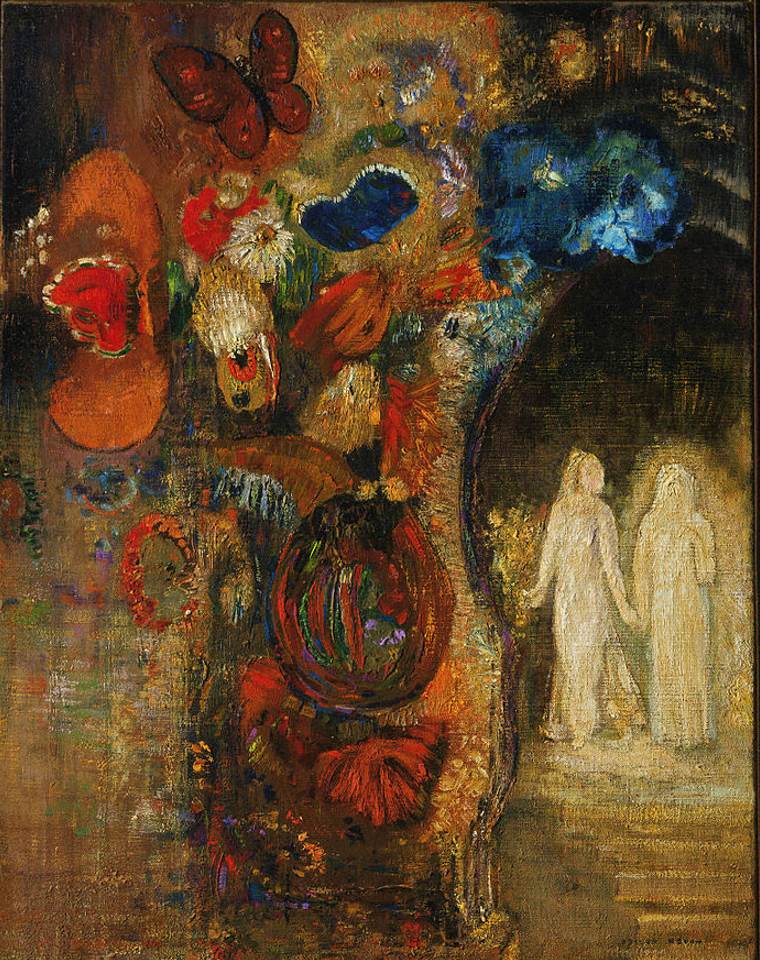
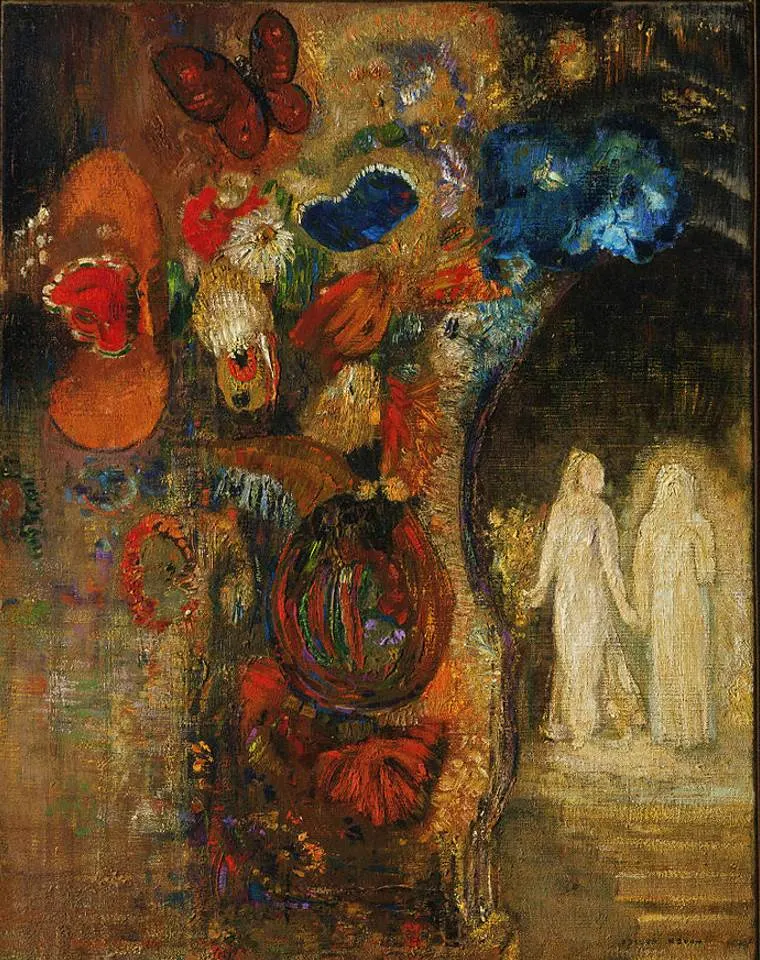 Apparition by Odilon Redon/ Wiki Commons
Apparition by Odilon Redon/ Wiki Commons
Примечания и ссылки
- ↑ и , стр. 20.
- ↑ and
- ↑ и Жан-Люк Деструо, Безмолвная природа. Выставка «Пейзажи Одилона Редона» в Galerie des Beaux-Arts 9 декабря 2016 г. — 26 марта 2017 г. (учебный файл),2016 г.
- Роберт Кусте , « Одилон Редон чудесным образом », Revue de l’Art , vol. 100, п о 1,1993 г., стр. 84–85
- , стр. 21-22.
- ↑ и , стр. 22.
- Поль Синьяк, От Эжена Делакруа до неоимпрессионизма , Париж, Герман ,1964 г., стр. 147.
- « Одилон Редон: от фантастического черного к безмятежному цвету », L’Express ,23 марта 2011 г..
- ↑ и « Одилон Редон, принц снов », Гармония , Бес. Чиррипо, Монпелье Агломерация , п о 285,Июль / август 2011 г., стр. 40 из 48 (по состоянию на 13 июля 2018 г.).
- Цитируется в Roseline Bacou , Odilon Redon , Geneva, Pierre Cailler edition.
- Редон дает п о 7, опубликованном в августе 1885 г., красивый фронтон: Брунгильда .
- См. Марио д’Анджело (координатор), Музыка в Belle Époque. Вокруг художественного дома Гюстава Файе (Безье, Париж, Фонфруад) , Нарбонна, MAGFF, 2010.
- ↑ и «Редон, Одилон», в Джанин Байи-Герцберг , Словарь гравюры во Франции (1830-1950) , Париж, Arts et Métiersographiques / Flammarion, 1985, с. 274-277 .
- ↑ и
- Андре Меллерио, Оригинальная литография в цветах , Париж, Editions de L’Estampe et l’Affiche, 1898.
- .
- (in) на (по состоянию на 26 июля 2017 г. ) .
- (in) на (по состоянию на 26 июля 2017 г. ) .
- (in) на (по состоянию на 26 июля 2017 г. ) .
- .
- .
- .
- .
- .
- .
- (в) на (по состоянию на 26 июля 2017 г. ) .
Baroness Robert de Domecy
- Date created: 1900
- Dimensions: 74 x 68 centimeters (29.13 x 26.77 inches)
- Location: Musée d’Orsay, Paris, France
Baroness Robert de Domecy is the title of a portrait by Odilon Redon that depicts the life of one of his close friends, Baron Robert de Domecy. It’s one of several portraits that the French artist produced of the woman and it clearly emphasizes the incredible talent that he was blessed with.
The woman takes up space on the right side of the painting and was depicted in deep contemplation as she gazes hypnotically toward the left. The mystical colors used by the artist to complete the background add an extra dimension to the painting for both the depicted woman and the viewer.

 Baroness Robert de Domecy / Wiki Commons
Baroness Robert de Domecy / Wiki Commons
From Disgust to Empathy: The Crying Spider

Spiders are a common motif in Odilon Redon’s work. Perhaps, they can be understood as a variation of the floating head symbol. Although spiders rarely evoke positive associations, Redon’s version of the unpleasant being is not as disgusting as it may appear at first glance. The Crying Spider is profoundly sad, weeping with so much sorrow that it is hard to be repulsed by it. Instead, the being evokes compassion, as if it is showing the face of sadness and pain hidden deep inside every human soul. Redon’s monsters were not meant to be terrifying. They can be interpreted as projections of human subconsciousness, suppressed feelings, or hidden emotional urges.
Accomplishments
- Redon worked almost exclusively in black and white during the first half of his career. In both charcoal drawings and lithographic prints, the artist relied on the expressive and suggestive possibilities of black in his monochromatic compositions called noirs. These are some of his most famous works, and typify Symbolism in their mysterious subjects and bizarre, dreamlike inventions.
- Redon’s use of non-naturalistic color in his late pastels and oil paintings prefigure the later development of Expressionism and abstraction. In portraits, still lifes, and decorative ensembles, Redon explored the expressive and suggestive powers of color. Many of these works include passages that are purely nonobjective, often seen in the ethereal chromatic backgrounds that he coupled with figurative subjects.
- One of the main themes in Redon’s oeuvre is the decapitated or disembodied head. Often shown free-floating, and sometimes reduced to a mere eyeball, the severed head encapsulates the Symbolist desire to free oneself from the shackles of the ordinary, mundane world, and achieve a higher state of consciousness through the exploration of dreams and subjective vision.
- When asked in an interview about his favorite artistic subjects, Redon replied, «My monsters. I believe that it is there that I have given my most personal note.» While Redon’s depictions of «monsters» — often hybrid human-plant or human-animal creatures — were the product of his vivid imagination, they also owed a great deal to his knowledge of the natural sciences, and especially new theories of evolution put forth by Charles Darwin, which for the first time established a connection between humans and our animal ancestors.
On Love and Gentle Monsters: The Cyclops
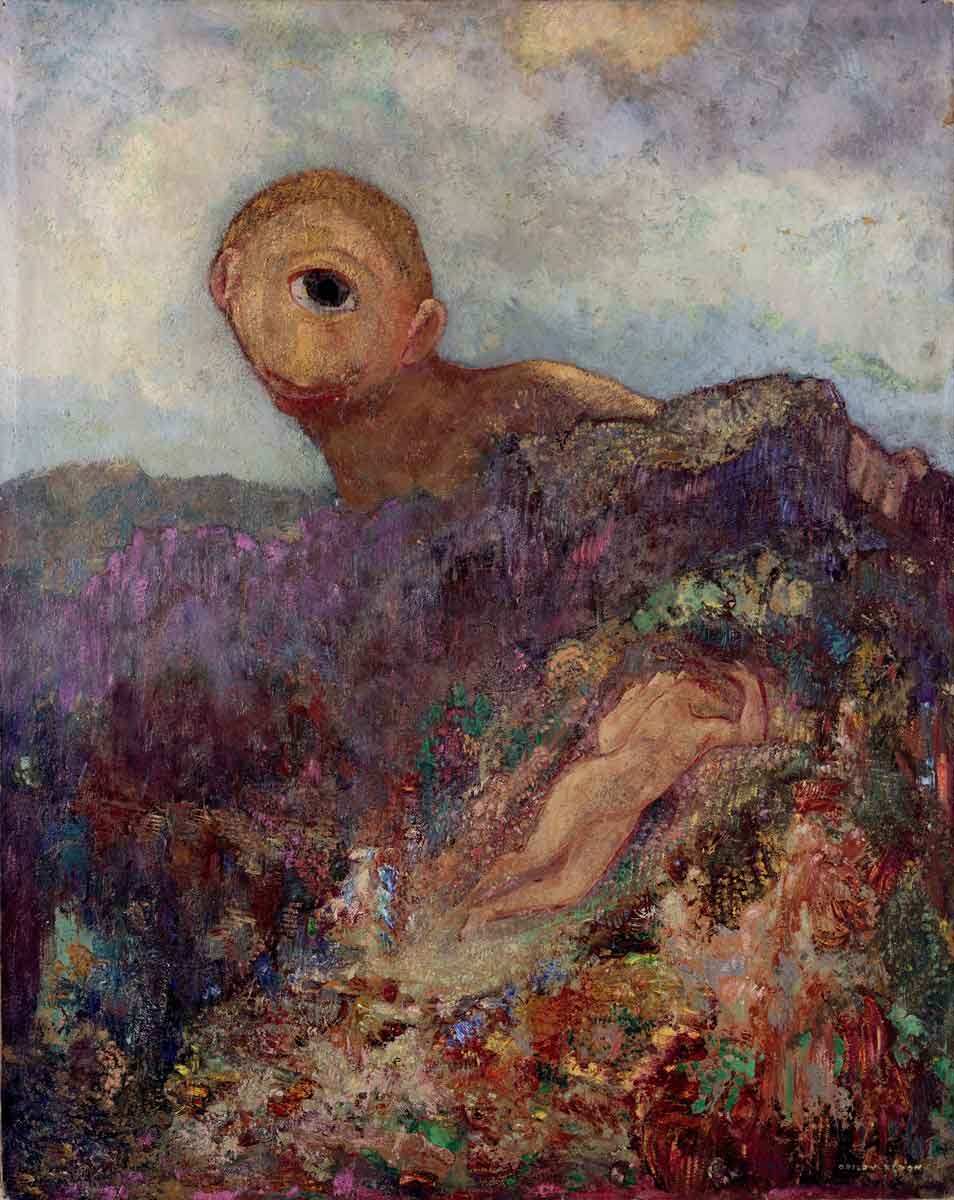
In one of his widely known paintings, Redon reimagined the Greek myth of a one-eyed giant Polyphemus who falls in love with the naiad called Galatea. According to ancient Greek sources, Polyphelus was represented as a bloodthirsty man-eating monster. In Homer’s text, for instance, Polyphemus was blinded by Odysseus for trying to eat the crew of his ship. However, just like in the case of the siren discussed above, Redon’s Polyphemus is drastically different from the original myth.
His Cyclops is not a violent horrifying beast but a gentle giant, longing for love and affection, observing his loved one from a distance. He may frighten the unprepared viewer, but not because the artist intended it to do so. Redon’s monsters are creations of the human mind and the subconscious, things often dark and abnormal, but rarely threatening or aggressive.
Reassured And Appeased
Both the lithograph noirs and colorful fractals of the 1900s evoke the feeling of a narcotic trip and embody the symbolist aspiration for non-mimetic art acquiring features of music. Human figures placed in bursts of color look like they’re glued to the background in the modernist collage manner or painted right on the wall. The choice of colors and shapes may also remind you of the old icons. Redon is fairly regarded as a predecessor of avant-garde art not only because of his vivid visual musicality but also due to his ability to draw unexpected parallels like in his famous depiction of the eye-balloon that could be freely attributed, for instance, to Roland Topor. Like for any gifted artist, it wasn’t enough for Redon just to imitate reality, so he invented his own visual language. As the artist said himself, «I have often, as an exercise and as a sustenance, painted before an object down to the smallest accidents of its visual appearance; but the day left me sad and with an unsatiated thirst. The next day I let the other source run, that of imagination, through the recollection of the forms and I was then reassured and appeased» (Wikipedia).
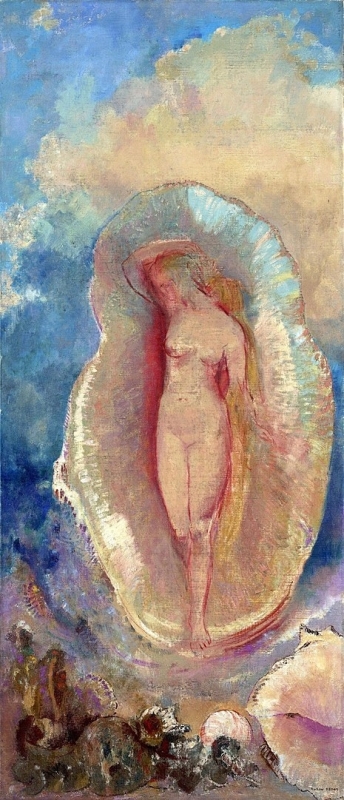
Fig. 16. The Birth Of Venus, 1912 (wikiart.org)
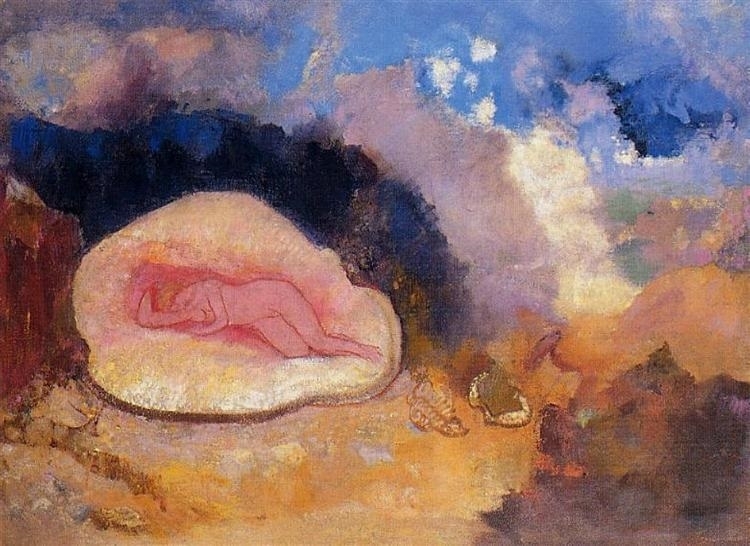
Fig. 17. The Birth Of Venus 2, 1912 (wikiart.org)
Evocation of Roussel
- Date created: 1912
- Dimensions: 73 x 54 centimeters (28.75 x 21.25 inches)
- Location: National Gallery of Art, Washington D.C., United States
Evocation of Roussel is the title of a painting that highlights the remarkable transition that Odilon Redon went through during his career. It’s hard to believe that the man only painted black-and-white drawings initially after seeing this remarkably colorful work of art.
The focus of the painting is a balding old man who appears to have peach-colored skin. He is surrounded by flowers and the blue sky features apricot-colored clouds. It’s one of the many examples in which the artist applied very thick brushstrokes which are visible in every part of this painting.
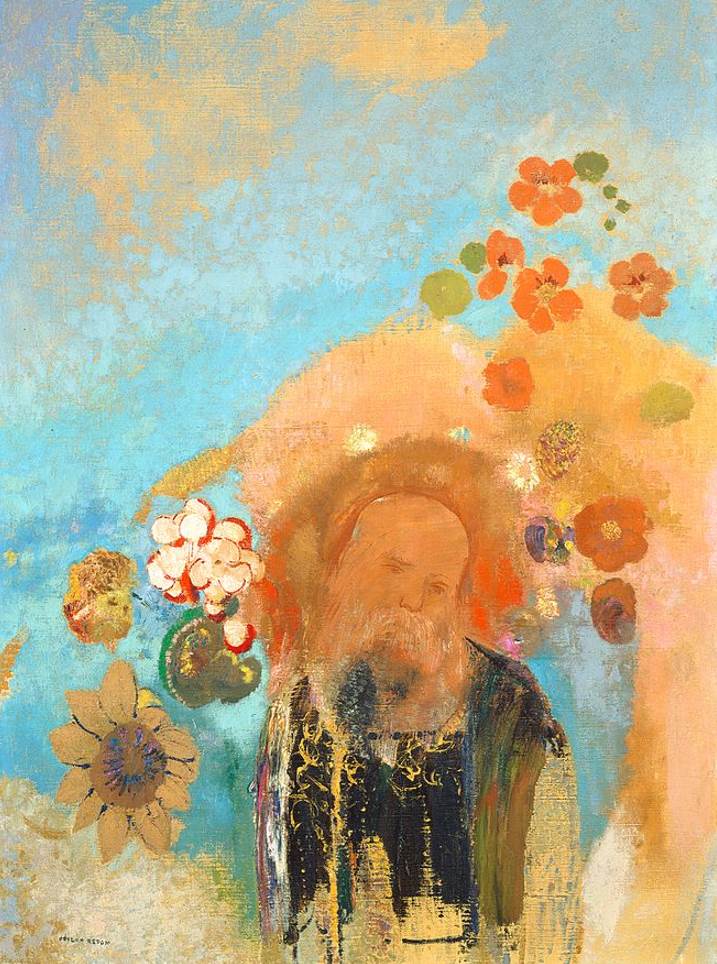
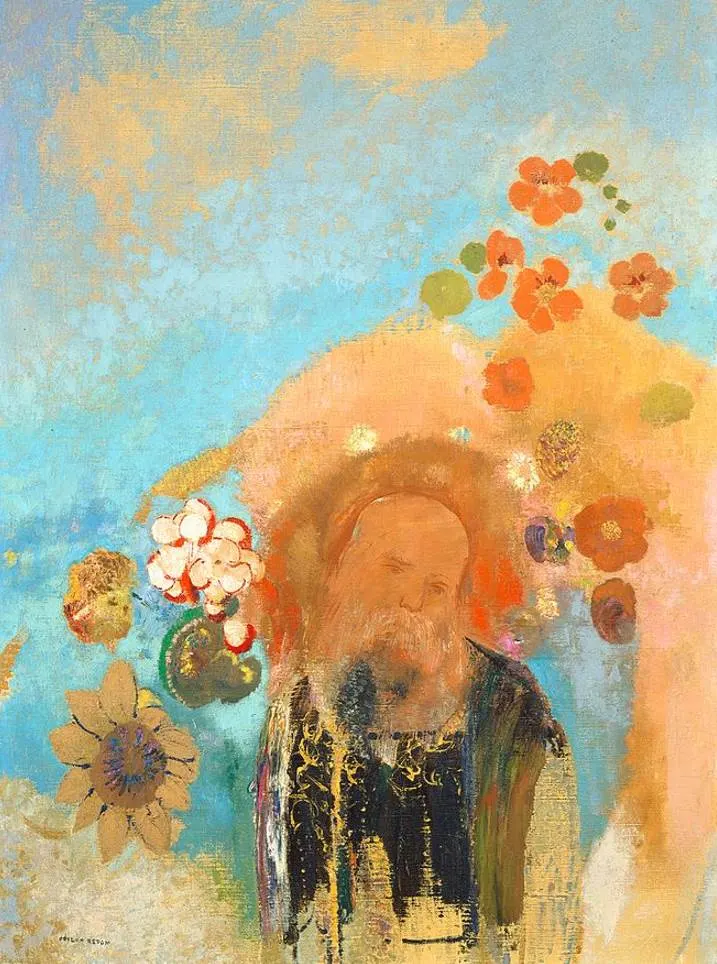 Evocation of Roussel / Wiki Commons
Evocation of Roussel / Wiki Commons
Odilon Redon: Exploring the Dreamscape of Symbolism
Odilon Redon (1840-1916), a French symbolist painter, is renowned for his unique and enigmatic style that transcends conventional artistic boundaries. His work, characterized by its dreamlike quality, surreal imagery, and a fascination with the macabre and mystical, stands as a testament to the Symbolist movement of the late 19th and early 20th centuries. In this article, we delve into the history, style, and critical analysis of Odilon Redon’s paintings.
 Odilon Redon
Odilon Redon
Early Life and Artistic Development: Born in Bordeaux, France, Redon initially pursued a career in architecture before turning to art. His early works, influenced by the Realist and Romantic movements, displayed a conventional style. However, a pivotal moment came when he encountered the works of the Symbolist poet Charles Baudelaire and the innovative printmaker Rodolphe Bresdin. These encounters had a profound impact on Redon’s artistic direction.
Noirs and Charcoals (1870s-1880s): Redon gained recognition for his “Noirs” series during the 1870s and 1880s, which consisted of dark, monochromatic drawings and lithographs. These pieces, often described as “black dreams,” featured fantastical and nightmarish imagery. Critics have interpreted these works as a representation of the artist’s inner world, exploring themes of the subconscious, dreams, and the mystical.
Transition to Color (1890s): In the 1890s, Redon transitioned from his predominantly black and white palette to experimenting with color. This phase marked the beginning of a more colorful and vibrant period in his artistic career. He created a series of pastels and paintings, known for their vividness and ethereal quality. His use of color was no less imaginative than his earlier black and white works, as he explored themes of fantasy, nature, and the supernatural in his colorful pieces.
Mystical and Symbolic Imagery: Redon’s works are filled with symbolism, drawing inspiration from literature, mythology, and his own imagination. His depictions of floating eyes, strange creatures, and disembodied heads have puzzled and intrigued art enthusiasts for generations. Critics have interpreted his paintings as visual poems, inviting viewers to explore the mysteries of the human psyche and the transcendental.
Influence on Later Art Movements: While Redon was not widely embraced during his lifetime, his work had a significant impact on subsequent art movements. His imaginative approach to color and form influenced the Surrealists, particularly artists like Salvador Dalí and René Magritte, who admired Redon’s ability to evoke the uncanny and surreal.
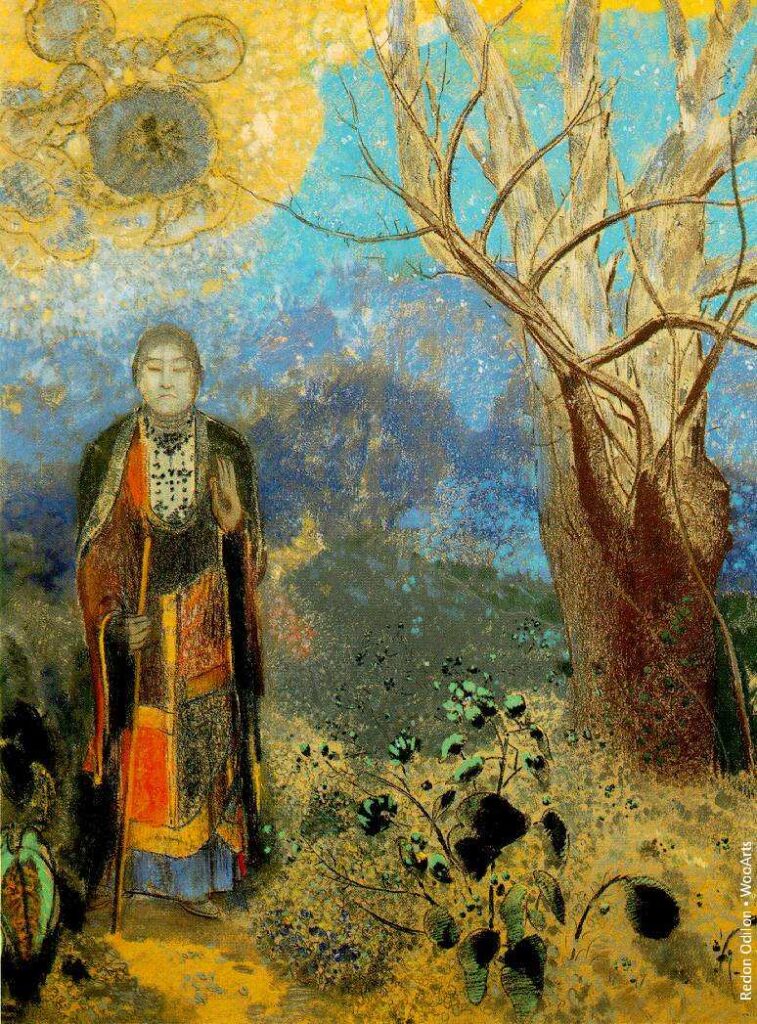 Odilon Redon
Odilon Redon
Legacy and Critical Reception: Odilon Redon’s paintings continue to captivate contemporary audiences, as they offer a unique blend of the fantastical and the introspective. Critics applaud his ability to traverse the boundary between reality and dreams, exploring the inner recesses of the human mind. His legacy as a pioneering symbolist artist endures, and his work remains an essential part of the art historical canon.
In conclusion, Odilon Redon’s art invites us to journey into the realm of the mysterious and the subconscious. His ability to create dreamlike, symbolic, and imaginative works has left an indelible mark on the art world, challenging viewers to ponder the depths of the human psyche and the boundaries of artistic expression.
 Odilon Redon
Odilon Redon
The Birth Of Venus
There are some recurring motifs in Redon’s art, such as the figures of Ophelia or Buddha. The deity of love also reappears in the works of the artist. Redon produced several variations of the birth of Venus. Two of them belong to the best representations of this theme in world culture, we suppose. These two are Venus standing and lying with a shell in the background. The shape and color of the shells, together with the pink figure of the goddess, make the whole composition look similar to female genitalia. Moreover, as mentioned in the article on the platform DesignIsPlay, the shell looks like a nimbus or an almond-shaped aureole in the icons of Mary or Christ. According to the myth, Venus was born from the mixture of blood and semen of Uranus’ severed phallus. In the painting of Redon, Venus emerges from a vulva-shaped shell, which may conceptually remind you of «The Origin Of The World» Courbet’s oeuvre. Curiously, Redon created an iconic image that combines the figure of the goddess with an object it represents as the sign of Venus is used to define the female gender. Let’s mention that the resemblance of an almond-like nimbus to the vulva was also exploited in the tradition of Shunga. For instance, in Utagawa Yoshikazu’s piece, the figure of Buddha is depicted with an erected penis and a vulva instead of a nimbus above his head.
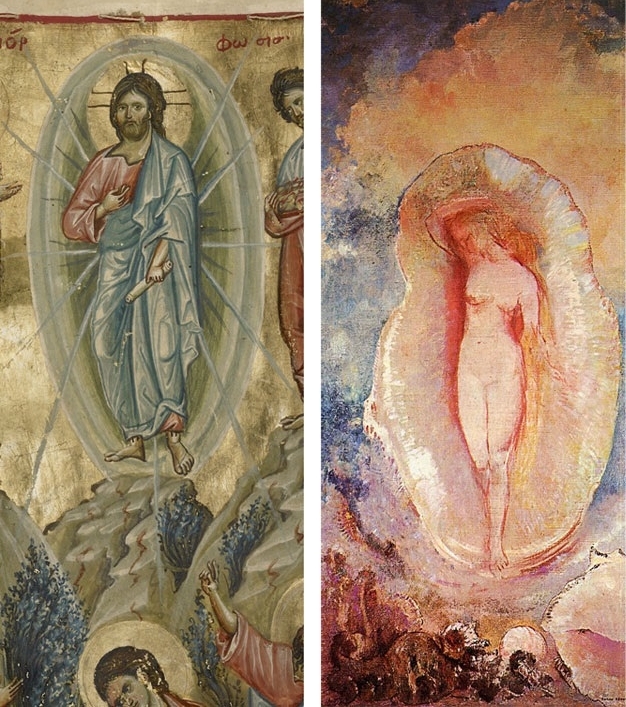
Fig. 18. Left: Detail from the 13th century Byzantine manuscript in the collection of the J. Paul Getty Museum, Los Angeles (the juxtaposition is taken from designisplay.com).
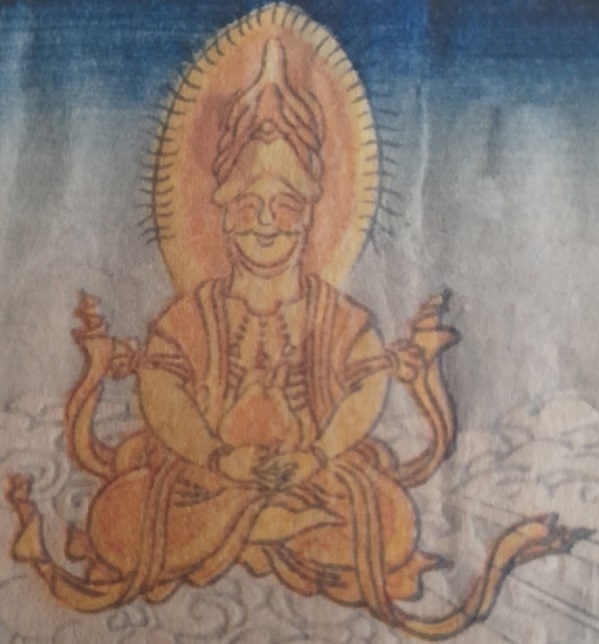
Fig. 19. Utagawa Yoshikazu “Shunjō iro no irekomi” series, 1849 (“Shunga. Explicit Art Of Japan”, 2016, p. 314).
Here’re other amazing examples of Redon’s sensuality:
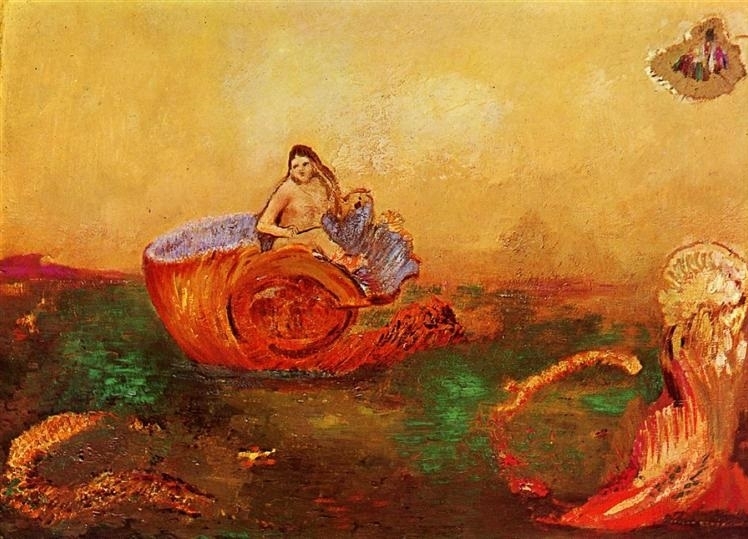
Fig. 20. The Birth Of Venus, 1912 (wikiart.org)
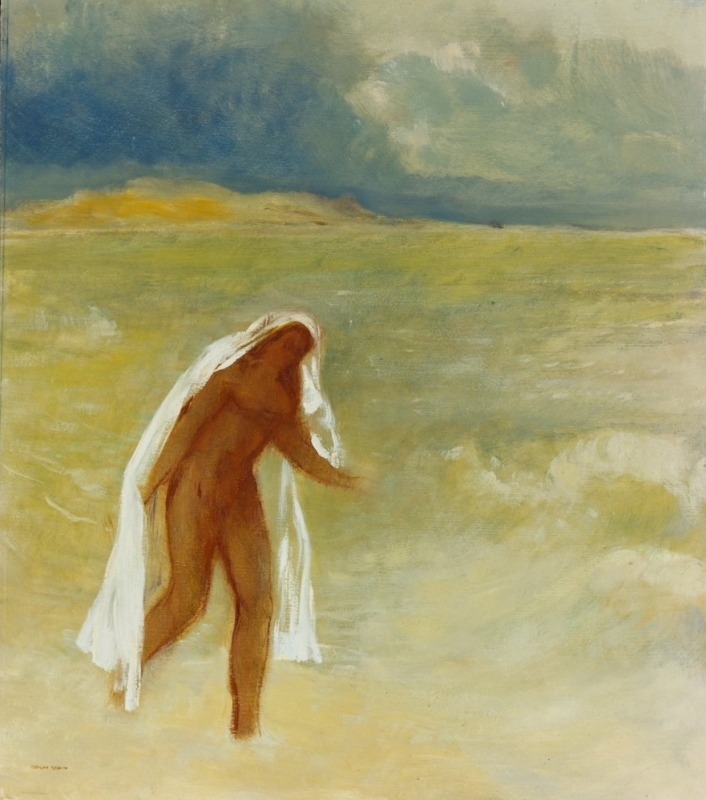
Fig. 21. The Birth Of Venus (sammlung.staedelmuseum.de)
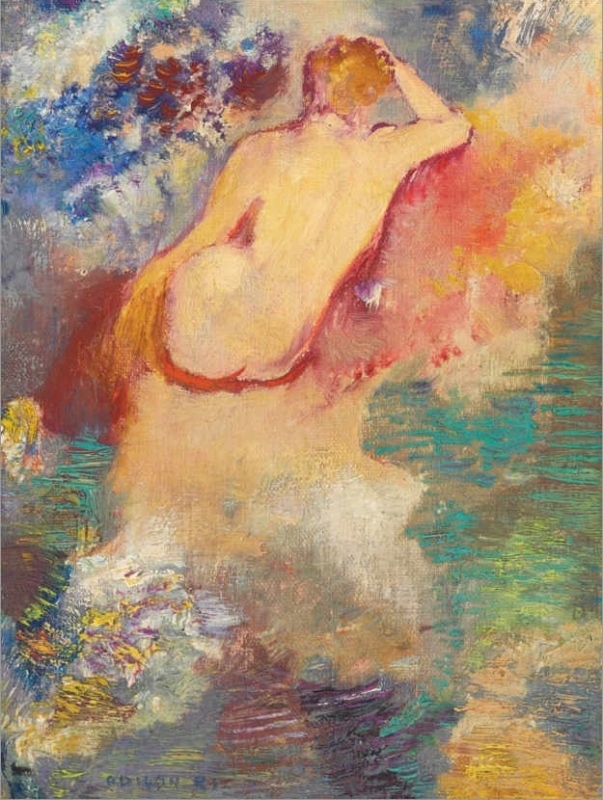
Fig. 22. The Birth Of Venus (posterlounge.no)
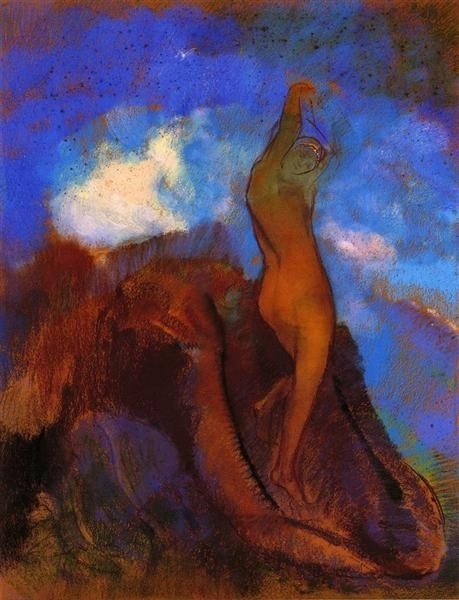
Fig. 23. The Birth Of Venus, 1912 (wikiart.org)
Fig. 24. Pandora (wikiart.org)
Fig. 25. Andromeda (wikiart.org) with a phallic arch in the background
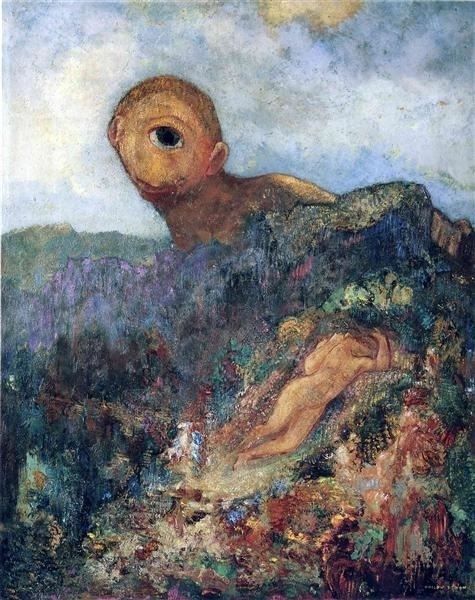
Fig. 26. The Cyclops, 1914 (wikiart.org). The Giant Polyphemus and the nymph Galatea with whom he fell in unrequited love.

Fig. 27. Nude woman on the rocks (wikiart.org)
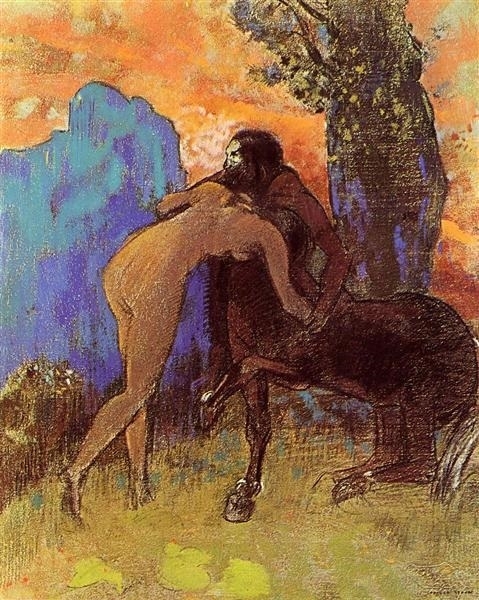
Fig. 28. Woman and a Centaur Struggling (wikiart.org)
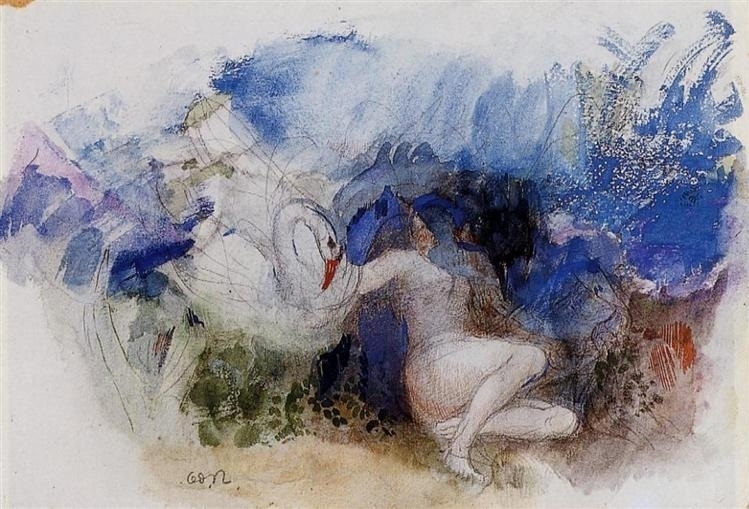
Fig. 29. Leda and the Swan (wikiart.org)
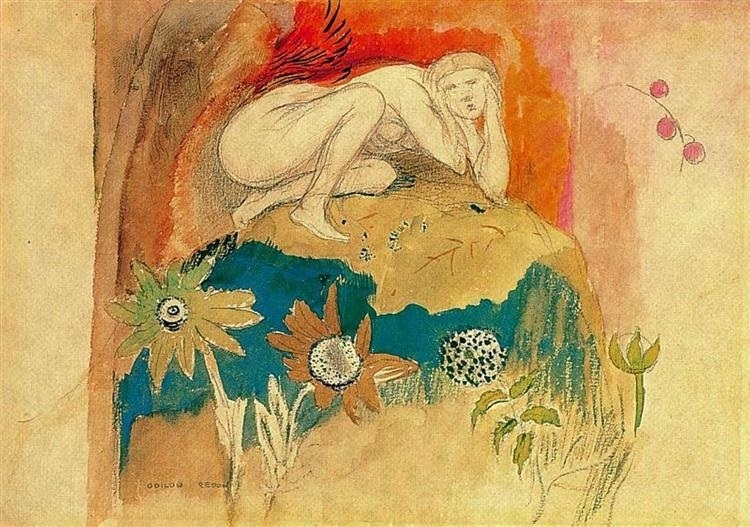
Fig. 30. Temptation (wikiart.org)
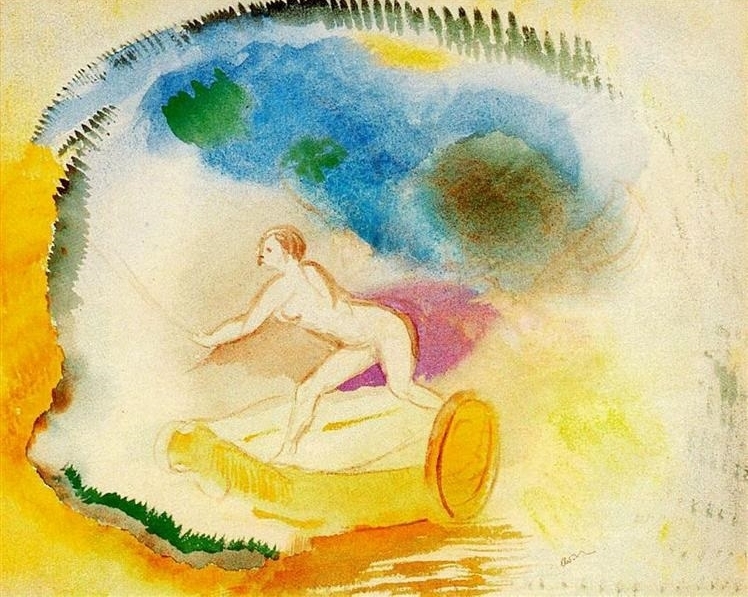
Fig. 31. Nude Woman On a Chariot (wikiart.org)
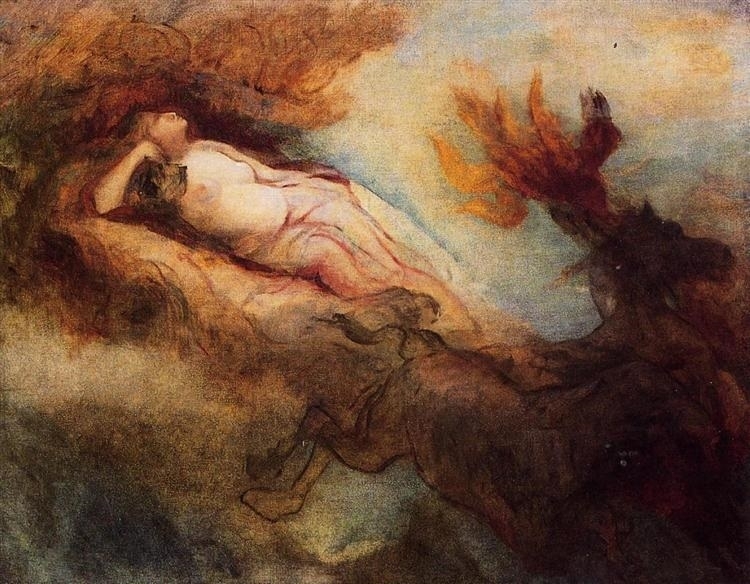
Fig. 32. Aurora (wikiart.org)
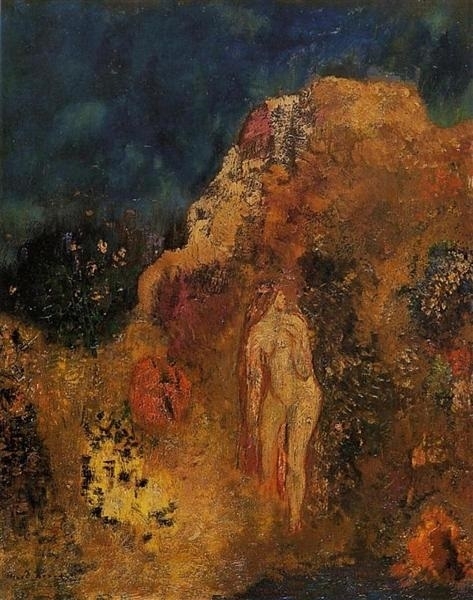
Fig. 33. Bathers, 1904 (wikiart.org)
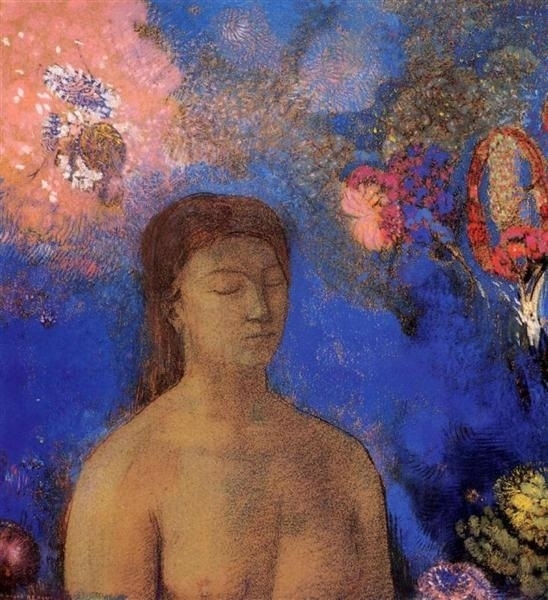
Fig. 34. Closed Eyes (wikiart.org)
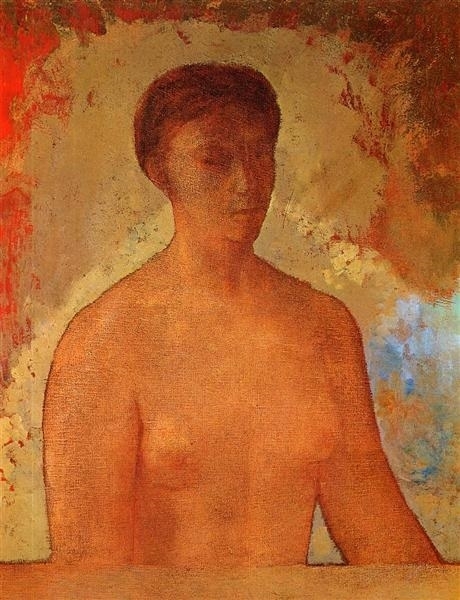
Fig. 35. Eve, 1904 (wikiart.org)
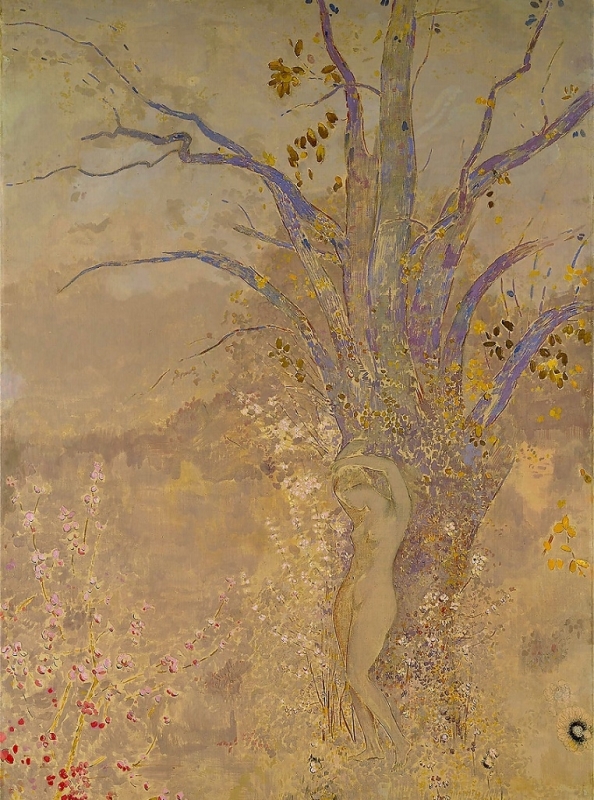
Fig.36. ‘Spring ‘, 1910
Click HERE for the mythological eros and modern decay in the paintings of Franz von Stuck….!!
Sources: Wikipedia.org; wikiart.org; http://designisplay.com/odile-redons-the-birth-of-venus/; K. Danelya, A. Pushakova. Shunga. Explicit Art Of Japan. 2016
Приложения
Библиография
- Жюльен Тейссандье, Бледный глаз Одилона Редона , Париж, Пьер-Гийом де Ру,2018 г., 197 с. ( ISBN 978-2-36371-249-3 )
- Софи Бартелеми, Сандра Буратти-Хасан, Гийом Амбруаз и Софи Кервран, « Тихая природа». Пейзажи Одилона Редона , Снок, колл. «Каталог музея»,2016 г., 264 с. ( ISBN 978-94-6161-344-8 ).
- [Лагранж и др. 2001] Марион Лагранж, Пьер Pinchon, Лоран Houssais, Эммануэль Амиот-Сольние, Ингрид Junillon и Мишель Илер, « Досье Одилон Рэдон, принц ей rêve », досье де l’искусство , п о 183,март 2011 г., стр. 18–64
- Фредерик Кановас, The Dreamed Writing, Париж, L’Harmattan, колл. «Литературные пространства», 2000, 328 с. ( ISBN 978-2738497895 ) .
- Одилон Редон: Резюме каталога живописных и рисованных работ , т. 3: Цветы и пейзажи, Институт Вильденштейна ,1996 г..
- Большой дворец (Париж) , «Одилон Редон»,
Внешние ссылки
-
Авторитетные записи :
- ( )
- Ресурсы изобразительного искусства :
- Ресурс, относящийся к общественной жизни
База Леонора
:
| Движение по XIX — го века | Неоимпрессионизм · Дивизионизм · Пуантилизм · Перегородчатость · Наби · Синтетизм · Символизм · Ар-нуво |
|---|---|
| Художники | Эмиль Бернар · Поль Сезанн · Жорж Дюфренуа · Поль Гоген · Анри де Тулуз-Лотрек · Одилон Редон · Анри Руссо · Жорж Сёра · Поль Синьяк · Винсент ван Гог · Рене Шютценбергер |
| Движение по XX — го века | Фовизм · Die Brücke · Der Blaue Reiter · Экспрессионизм · Кубизм |
| Художники | Жорж Брак · Андре Дерен · Василий Кандинский · Эрнст Людвиг Кирхнер · Франц Марк · Анри Матисс · Пикассо · Карл Шмидт-Ротлуф |
| Выставки | Groupe де XX · La Libre ESTHETIQUE · Независимых художники · Осенний Салон · Вольпините выставки · Le Barc де Boutteville · Салон де Cent · Амбруаз Воллар |
| Отзывы | Октав Маус · Феликс Фенеон · Альбер Орье · Река Жорж |
| См. Также: Импрессионизм · Модернизм · Современное искусство · Венский сецессион |
ОРФЕЙ
Лира Орфея. — Орфей и Эвридика. — Орфей в аду. — Орфей, растерзанный вакханками.
Лира Орфея
Музы — богини-девственницы; они любят только поэзию и музыку.
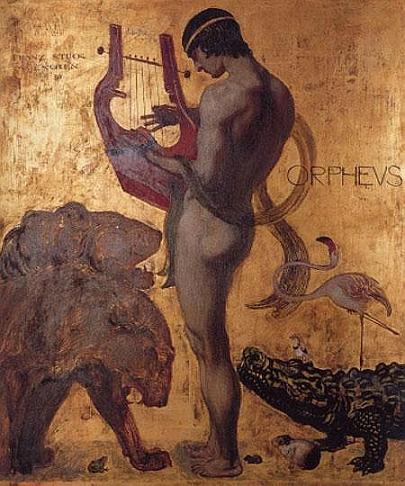 |
Афродита спросила однажды своего сына Эрота, почему он не ранит Муз своими стрелами. Эрот ответил Афродите: «Я их уважаю, потому что они достойны уважения; они всегда погружены в раздумье, всегда заняты новыми песнями, придумывают новые напевы. Но я часто приближаюсь к ним и слушаю их, очарованный их прелестными мелодиями» (Лукиан).
Целомудренность Муз вошла в поговорку у античных народов, но, выражаясь аллегорически, называли великого поэта или музыканта сыном Муз. Вот почему и Орфей называется сыном Каллиопы и Аполлона.
Орфей олицетворяет то восхищение, которое вызывала музыка у первобытных народов.
Мелодичный голос Орфея и чарующая игра на лире производили повсюду чудеса. Мы уже упоминали о том, что корабль Арго сам спустился на воду, очарованный игрой Орфея, но этого мало: деревья наклонялись, чтобы лучше слушать божественного музыканта; реки переставали течь; дикие звери, ставшие внезапно ручными, ложились у ног Орфея.
Орфей и Эвридика
Орфей в аду
Нимфа Эвридика была женой Орфея. Орфей ее очень любил, и когда Эвридика, ужаленная змеей, умерла, Орфей отправился в царство теней умолять Персефону вернуть ему ту, которая была ему так дорога.
От звуков лиры Орфея все препятствия исчезают сами собой. Тени умерших прекращают свои занятия, они забывают свои терзания, чтобы принять участие в горе Орфея. прекращает свои бесполезный труд, Тантал забывает свою жажду, Данаиды оставляют в покое свою бочку, колесо несчастного Иксиона перестает вертеться. Эринии (Фурии), и те, даже тронуты до слез горем Орфея.
Бог Плутон (Аид), покоренный звуками печальной лиры Орфея, соглашается возвратить ему Эвридику, но с тем только условием, что Орфей не взглянет на Эвридику до тех пор, пока не выйдет из царства теней. Но в ту минуту, когда Орфей и Эвридика уже прошли через все препятствия, когда им оставалось сделать лишь один шаг, чтобы выбраться из подземного царства, Орфей забыл свою клятву и обернулся, чтобы посмотреть на Эвридику. Она протягивает ему руки, Орфей хочет ее обнять, но Эвридика вновь исчезает в мрачном жилище Плутона, едва успев проститься с Орфеем навеки.
Орфей, растерзанный вакханками
Потеряв таким образом по собственной вине Эвридику, Орфей провел семь дней на берегу Ахеронта в слезах и печали, отказываясь от всякой пищи. Затем Орфей удалился во Фракию, избегая людей и живя среди зверей, которых привлекали к нему его нежные, грустные песни.
Вакханки открыли убежище Орфея и старались заманить его к себе на свои веселые празднества, но Орфей, возненавидевший всех женщин, отверг с презрением их приглашение. Тогда фракийские вакханки, разгневанные его отказом, растерзали Орфея на клочки.
Сохранилось много античных камей, на которых Орфей изображен пленяющим звуками своего голоса и лиры диких зверей.
Миф об Орфее не раз вдохновлял и новейших художников.
|
Прежде: Музы |
Далее: Стрелы Аполлона |

ЗАУМНИК.РУ, Егор Поликарпов, репетитор древнегреческого языка и преподаватель латыни: научная редактура, ученая корректура, исправления, дополнения. Для заказа услуг репетитора по языкам античности или переводчика просьба писать сюда: , либо сюда: vk.com/repetitor_latyni, либо сюда: .
Born Of Sickness And Delirium
Odilon originated from a wealthy family of a slave-trader. He showed his talent at an early age. Being ten years old, he won a drawing prize at school. His father wanted him to be an architect, but Odilon failed the exams at Paris’ École des Beaux-Arts. Instead of Odilon, his brother Gaston would successfully fulfill the parent’s wish. After the failure, Redon decided to take up sculpting but was recruited to military service during the Franco-Prussian war. When the war ended, the artist settled in Paris and started working in charcoal and lithography. His drawings «ushered in a very special type of the fantastic, one born of sickness and delirium,» as described in the novel written by Huysmans.
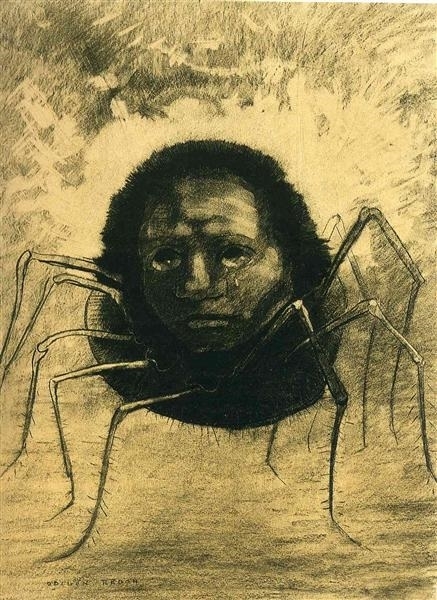
Fig. 9. The Crying Spider, 1881 (wikiart.org)
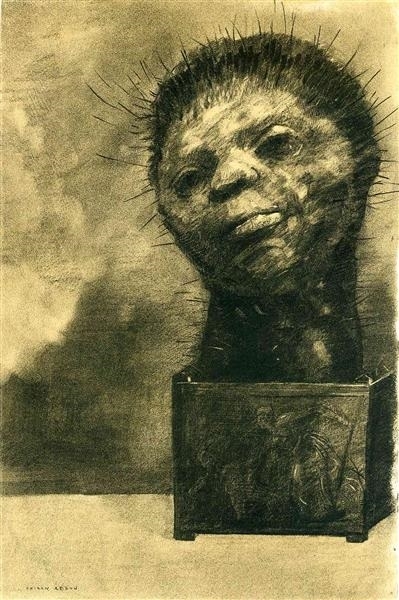
Fig. 10. Cactus Man, 1882 (wikiart.org)
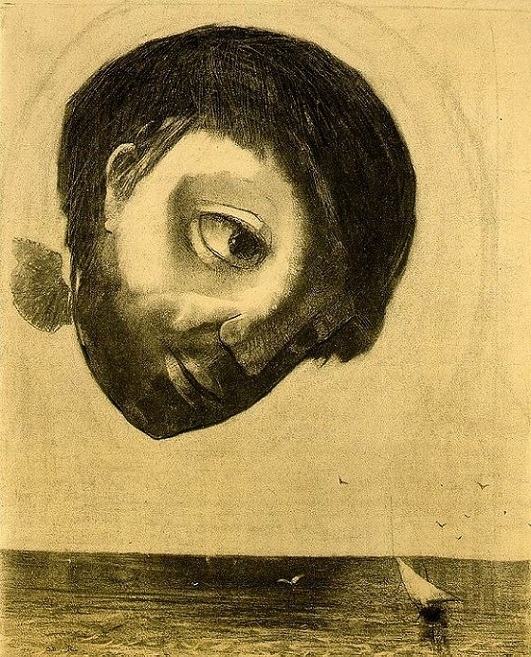
Fig. 11. Guardian Spirit of the Waters, 1878 (Wikipedia.org)
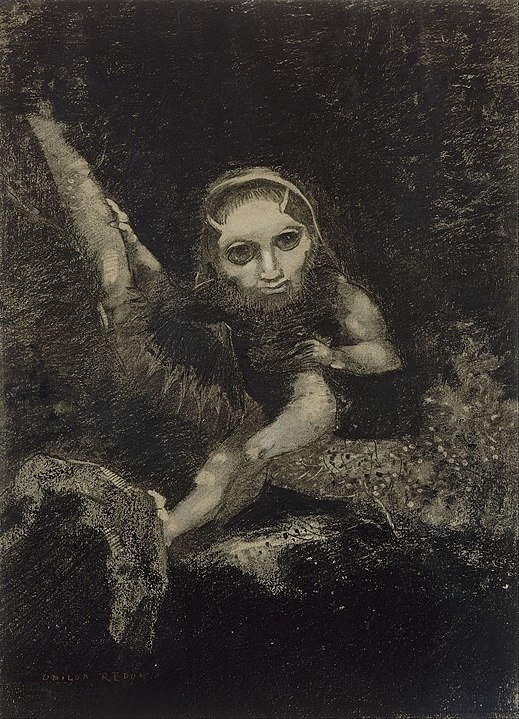
Fig. 12. Caliban (Wikipedia.org)
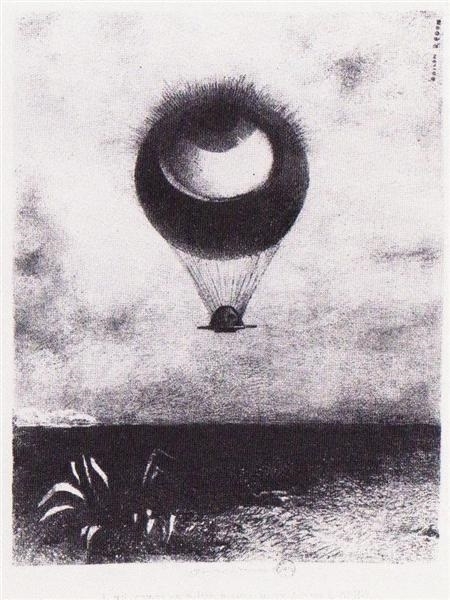
Fig. 13. The Eye Like A Strange Balloon Goes To Infinity, 1882 (wikiart.org)
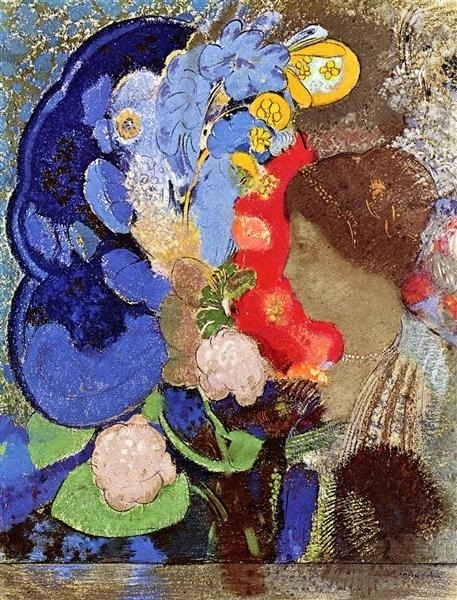
Fig. 14. Woman With Flowers, 1903 (wikiart.org)
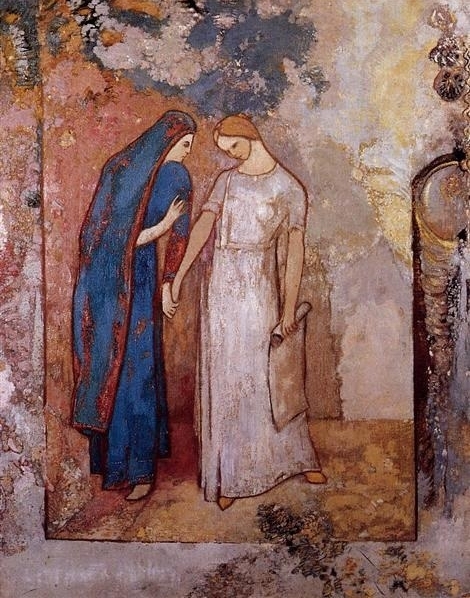
Fig. 15. Initiation To Study, 1905 (wikiart.org)
Family Portrait: Woman with Child
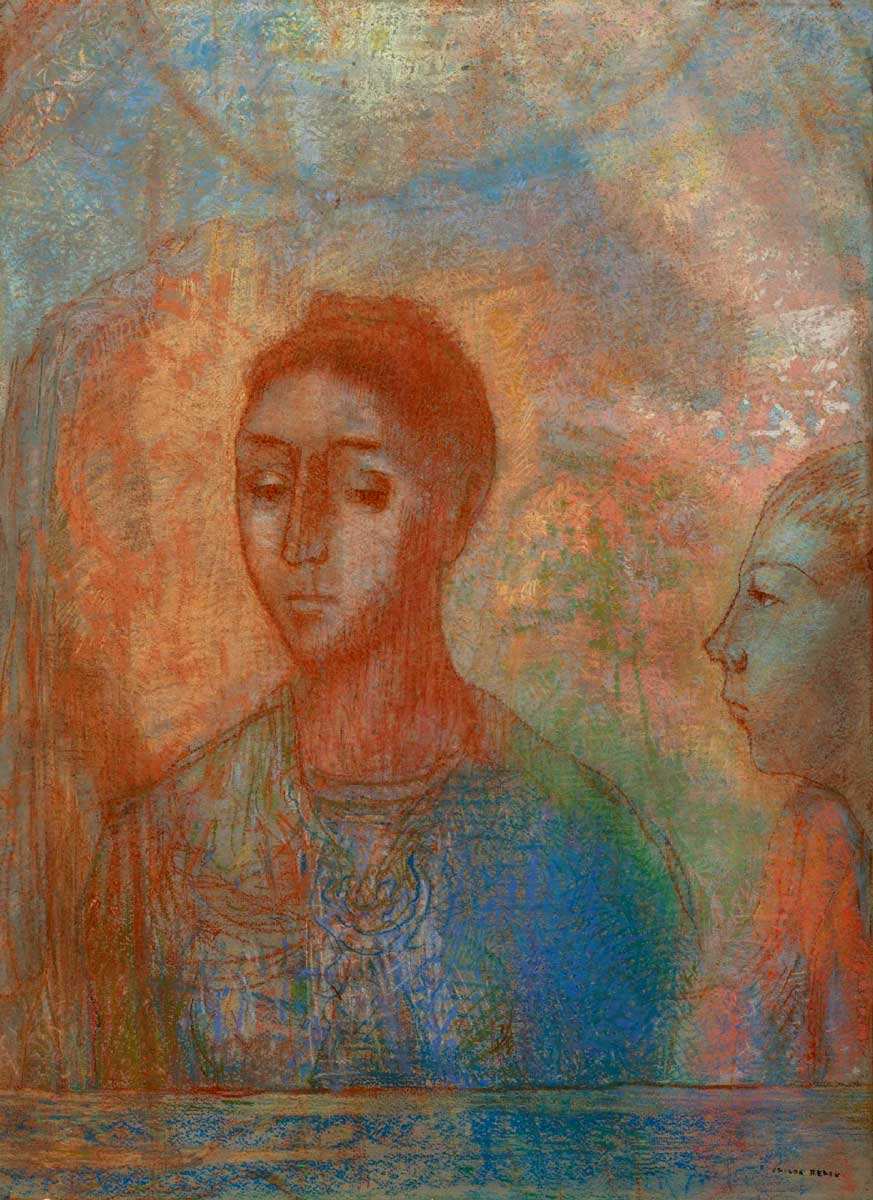
In the 1890s Odilon Redon moved from using only the black and white palette and started implementing colors. Many art historians link Redon’s extensive use of bright colors in his later period to the artist’s Creole heritage. Both his mother and wife were French Creoles, the former being born in Louisiana, and the latter in Ile Bourbon, now known as Reunion. Redon’s wife Camille and son Arï were frequently featured as characters in his paintings. Apart from the regular portraits, he frequently depicted his wife as a Christian saint or a glowing otherworldly being. The couple’s son, Arï Redon grew up to be an artist as well, but not as successful as his father.
On Love and Gentle Monsters: The Cyclops

In one of his widely known paintings, Redon reimagined the Greek myth of a one-eyed giant Polyphemus who falls in love with the naiad called Galatea. According to ancient Greek sources, Polyphelus was represented as a bloodthirsty man-eating monster. In Homer’s text, for instance, Polyphemus was blinded by Odysseus for trying to eat the crew of his ship. However, just like in the case of the siren discussed above, Redon’s Polyphemus is drastically different from the original myth.
His Cyclops is not a violent horrifying beast but a gentle giant, longing for love and affection, observing his loved one from a distance. He may frighten the unprepared viewer, but not because the artist intended it to do so. Redon’s monsters are creations of the human mind and the subconscious, things often dark and abnormal, but rarely threatening or aggressive.
Homage to the Author: To Edgar Poe
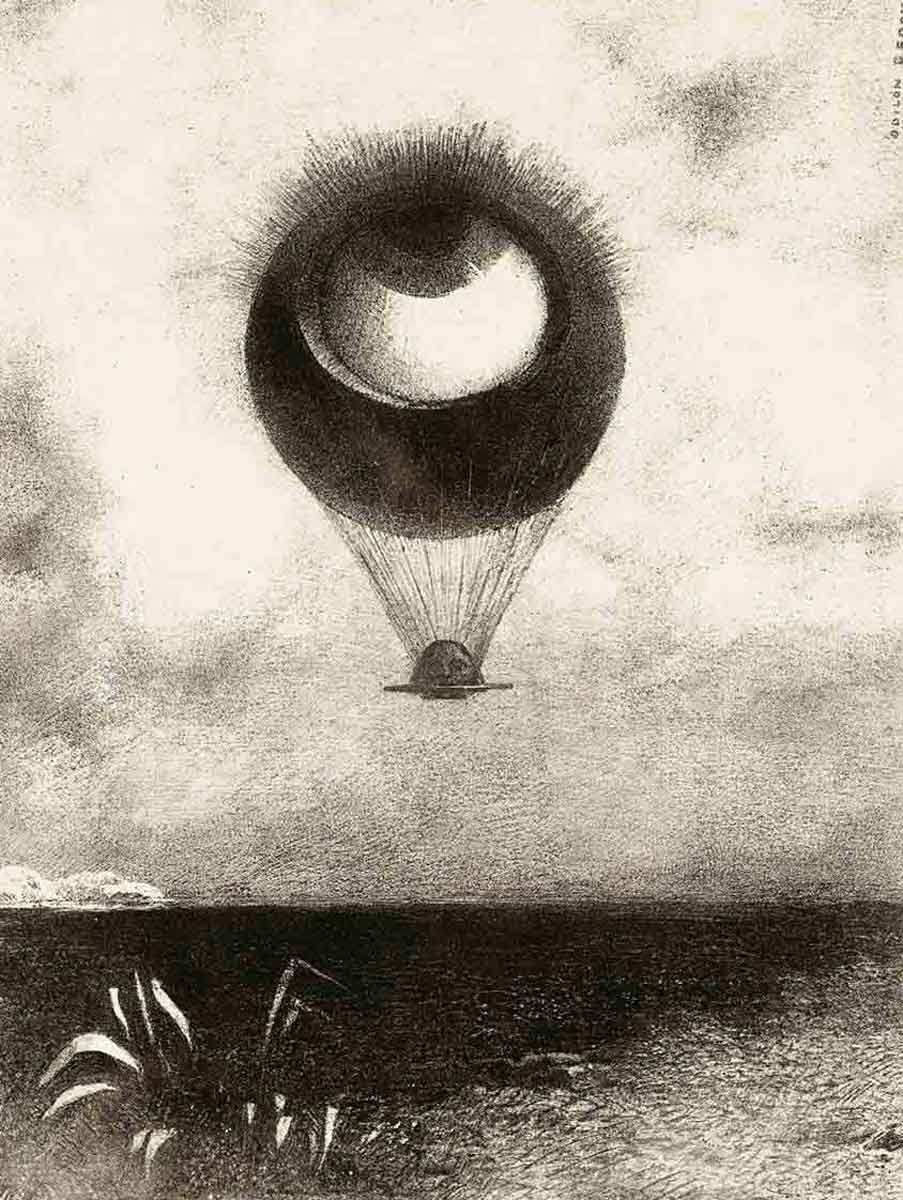
Get the latest articles delivered to your inbox
Sign up to our Free Weekly Newsletter
Redon’s dark and monstrous creations were frequently compared to the works of Francisco de Goya. Indeed, he took inspiration from him, publishing a series of lithographs titled Homage to Goya. Yet the artist had a lot more creators he was influenced by. One of these was the famous American writer Edgar Allan Poe, best known for macabre poetry and short stories. Floating heads and eyes were popular motifs for Odilon Redon, reappearing in his works in various shapes and forms over the years. The series of lithographs dedicated to Poe was not a direct illustration of his texts, but Redon nevertheless managed to translate his impression from literary to visual language. As art historian Marina van Zuylen it, Redon and Poe shared at least one common trait, yearning for rules of composition while portraying creatures that were unruly and decomposing.
Odilon Redon: A Critic’s Perspective on His Evolution, Influence, and Followers
Evolution of Odilon Redon’s Art: Odilon Redon’s artistic evolution is a testament to his boundless creativity and willingness to experiment. He began his career as a conventional artist, influenced by Realism and Romanticism. However, it was his encounter with Symbolist poets like Charles Baudelaire and visionary printmaker Rodolphe Bresdin that ignited a transformation in his work.
Redon’s early “Noirs” series, featuring dark, monochromatic imagery, marked a significant departure from traditional art. These works, characterized by nightmarish and fantastical themes, delved into the depths of the subconscious. Over time, Redon transitioned to using color, introducing a vibrant and ethereal quality to his art. His work evolved to incorporate themes of mysticism, nature, and the supernatural, creating a surreal and enigmatic aesthetic.
Influence on the Art World: Odilon Redon’s impact on the art world extends far beyond his own creations. His innovative approach to color, form, and symbolism influenced subsequent art movements, most notably Surrealism.
- Surrealism: Redon’s ability to evoke the uncanny and surreal in his paintings resonated deeply with Surrealist artists like Salvador Dalí and René Magritte. His dreamlike imagery and exploration of the subconscious served as a precursor to the Surrealist movement. Redon’s influence on Surrealism is particularly evident in Dalí’s fascination with dreamscapes and Magritte’s use of ordinary objects in unexpected and irrational contexts.
- Expressionism: Redon’s emphasis on emotional and symbolic content over realistic representation also left an imprint on the Expressionist movement. Expressionist artists sought to convey inner emotional states through distorted and symbolic forms, a concept that aligned with Redon’s approach.
Followers and Continuation of His Legacy: While Odilon Redon may not have founded a formal school or had a legion of direct followers, his work has inspired countless artists who share his fascination with the mysterious and symbolic. Some contemporary artists and movements that have been influenced by Redon include:
- Contemporary Surrealists: Artists like Yves Tanguy and Max Ernst carried forward Redon’s legacy by creating dreamlike and surreal artworks that echo his exploration of the subconscious.
- Abstract Expressionists: The abstract expressionists, including Mark Rothko and Jackson Pollock, drew inspiration from Redon’s emphasis on emotion and the spiritual in art. While their styles were significantly different, they shared a desire to transcend the physical in their work.
- Neo-Symbolism: In recent years, there has been a resurgence of interest in symbolism and mysticism in contemporary art. Some artists explore themes reminiscent of Redon’s, using symbolism and imaginative imagery to delve into the human psyche.
In conclusion, Odilon Redon’s artistic journey from conventional beginnings to his pioneering work in Symbolism, along with his influence on subsequent art movements, underscores his enduring impact on the art world. His ability to evoke the mysterious and the subconscious continues to inspire artists and captivate audiences, making him a crucial figure in the development of modern and contemporary art.

Odilon Redon

Odilon Redon

Odilon Redon

Odilon Redon

Odilon Redon
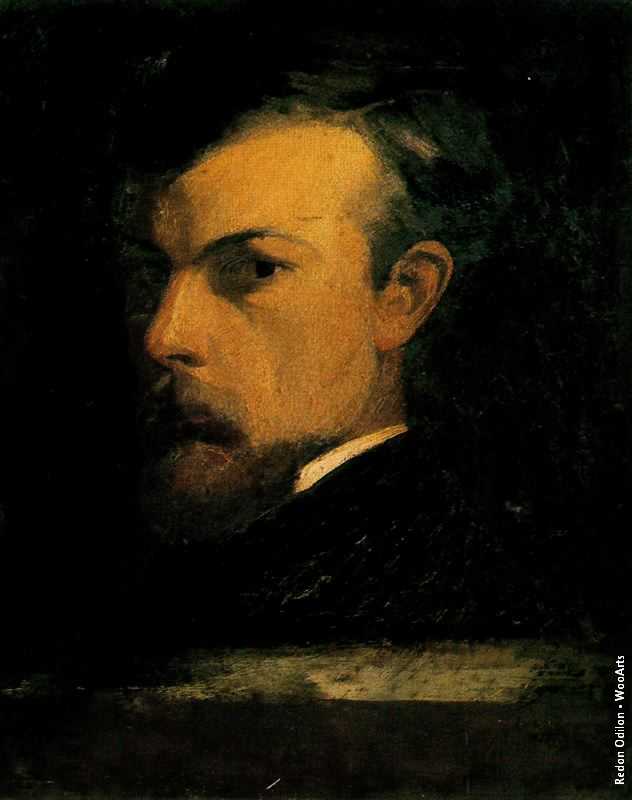
Odilon Redon

Odilon Redon

Odilon Redon
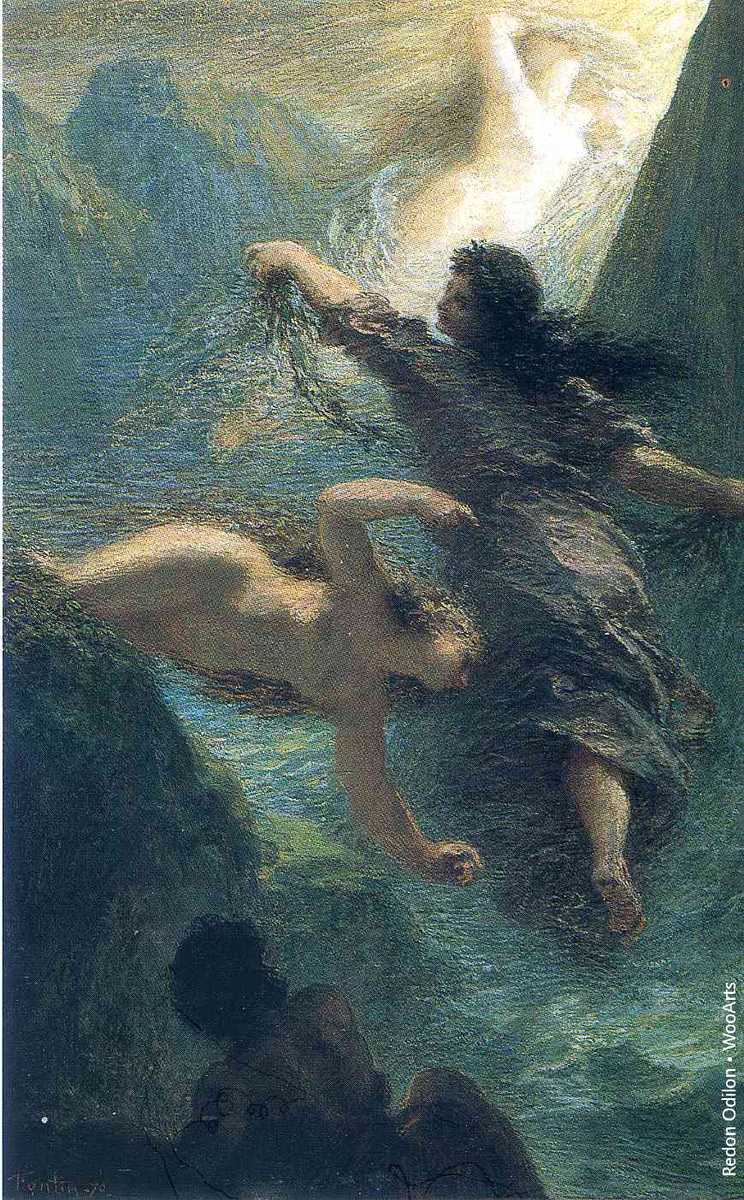
Odilon Redon

Odilon Redon

Odilon Redon

Odilon Redon

Odilon Redon
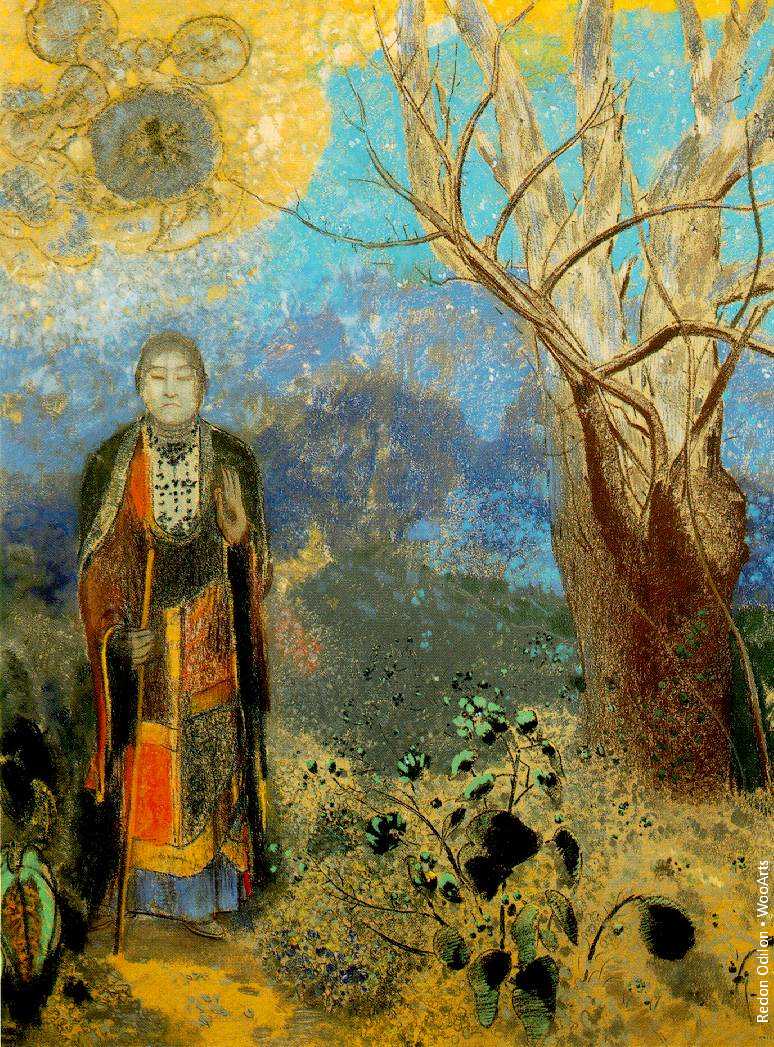
Odilon Redon
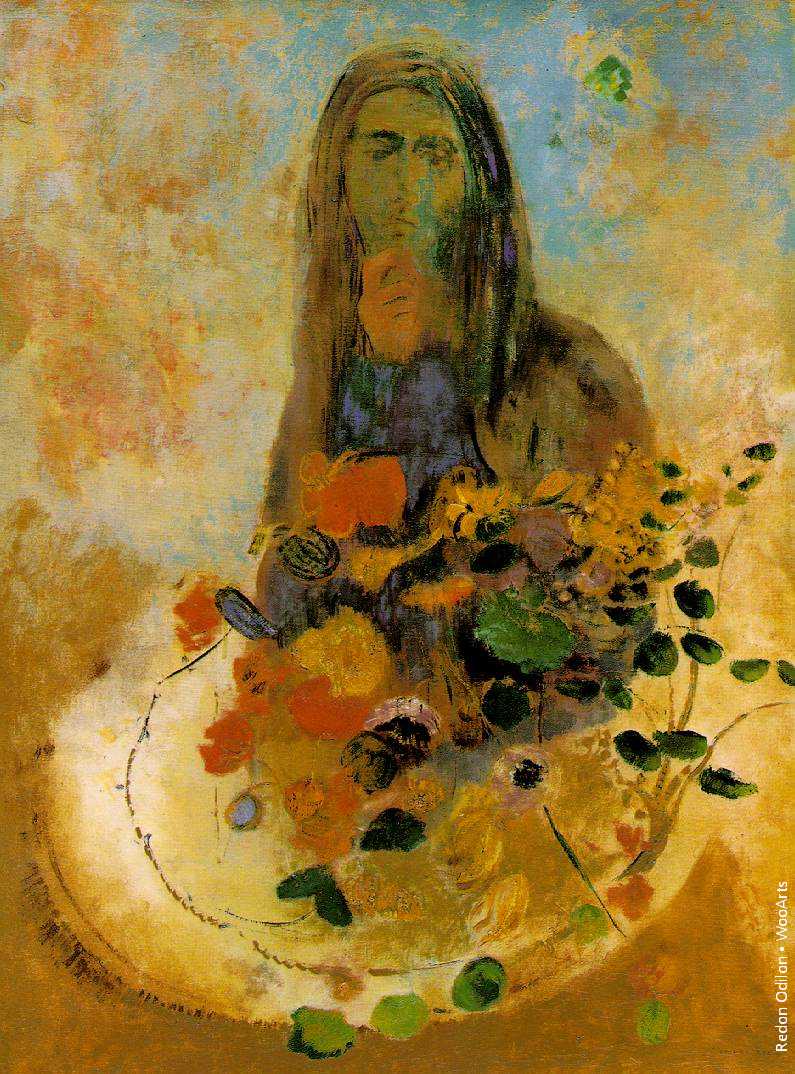
Odilon Redon

Odilon Redon
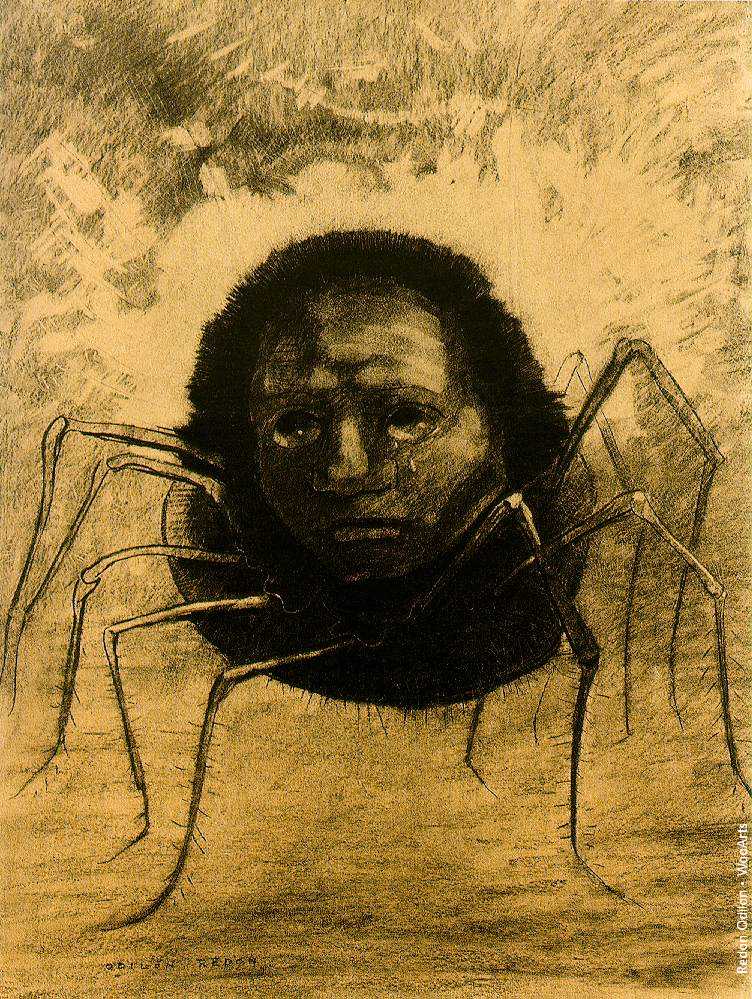
Odilon Redon

Odilon Redon

Odilon Redon

Odilon Redon

Odilon Redon

Odilon Redon

Odilon Redon

Odilon Redon

Odilon Redon
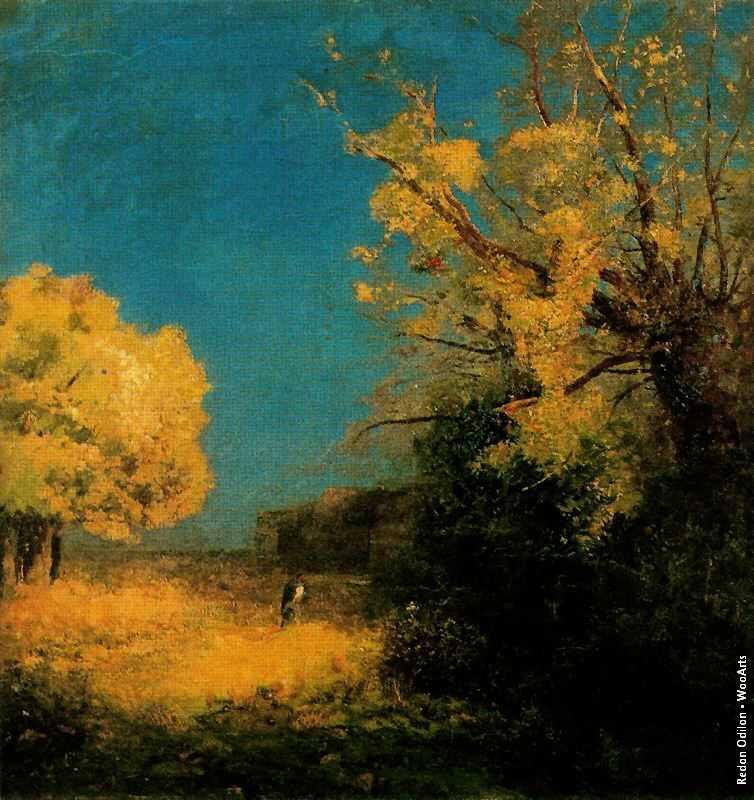
Odilon Redon

Odilon Redon

Odilon Redon

Odilon Redon
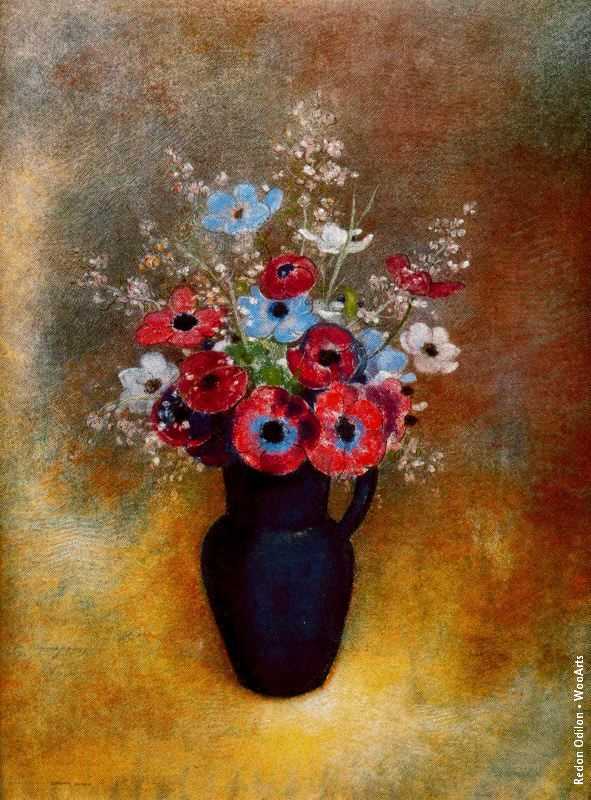
Odilon Redon

Odilon Redon

Odilon Redon

Odilon Redon

Odilon Redon

Odilon Redon

Odilon Redon
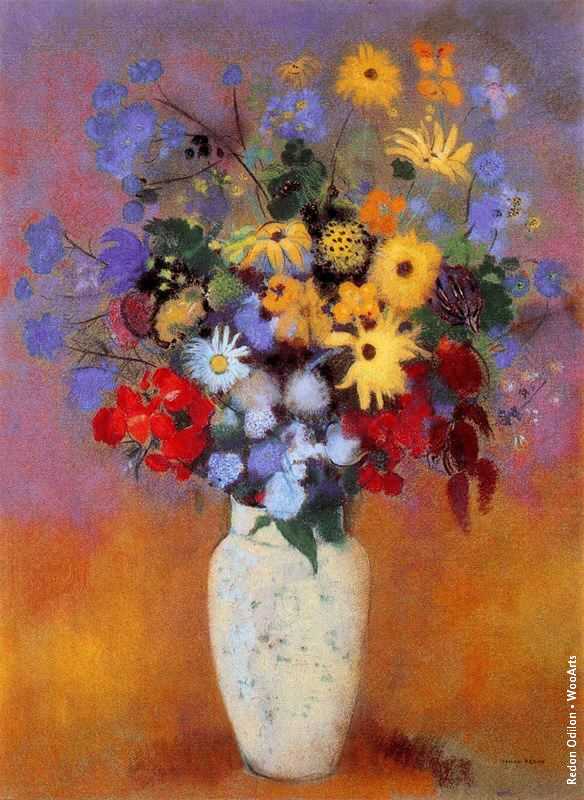
Odilon Redon
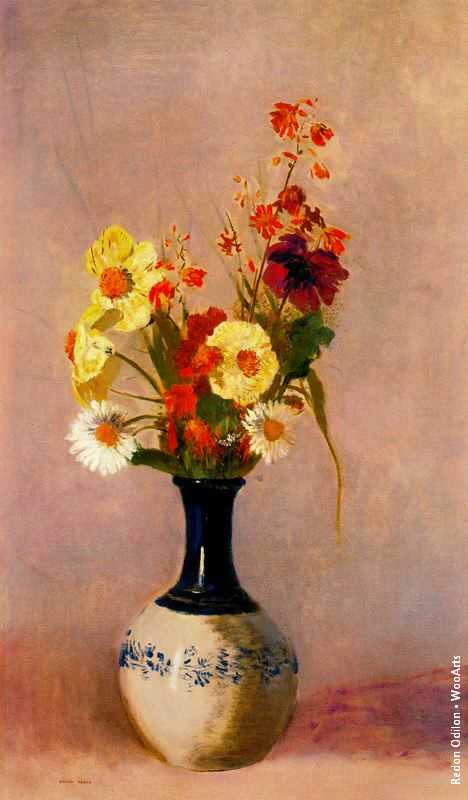
Odilon Redon
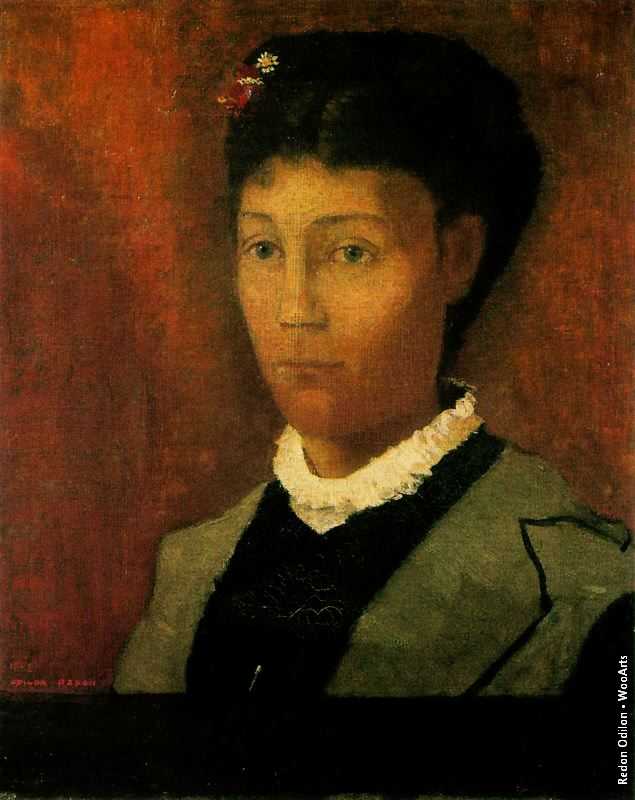
Odilon Redon
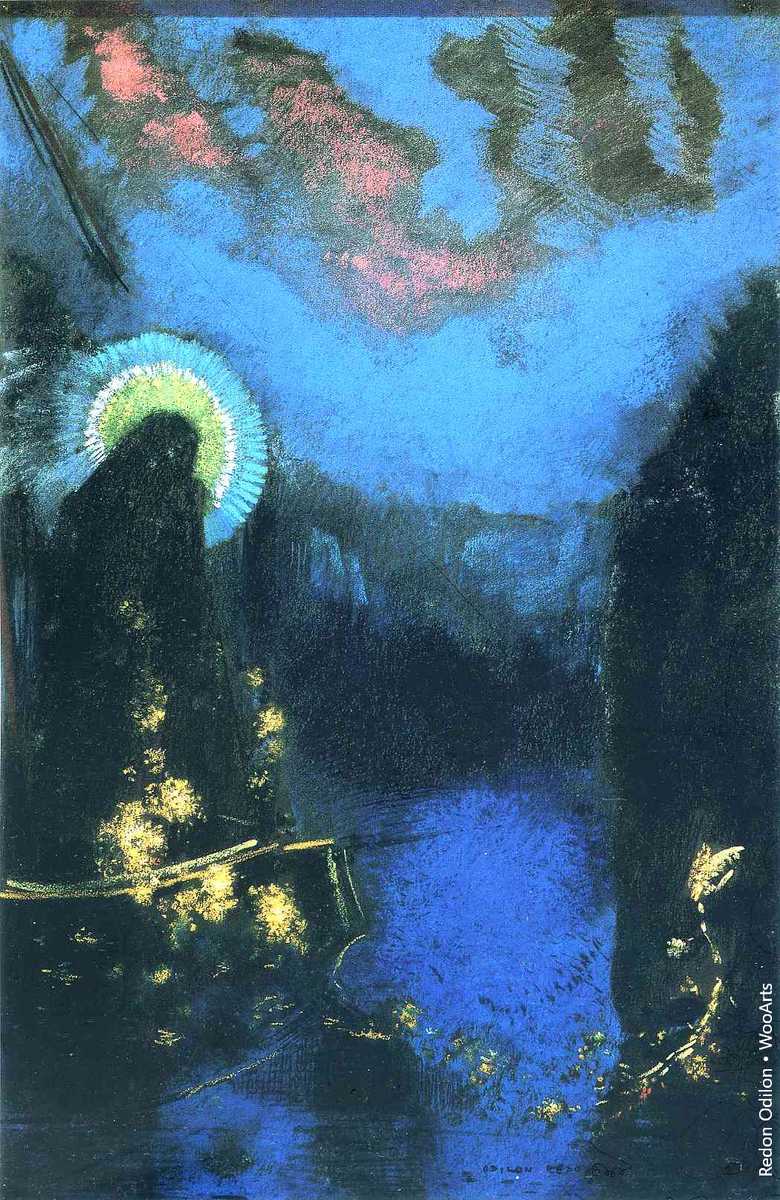
Odilon Redon




























